

A Trusted Source For Boating Information Since 2019
Can a catamaran cross the atlantic ocean 7 points to consider before adventure.
- Post Written By: Boater Jer
- Published: July 19, 2022
- Updated: July 22, 2022

Disclaimer: You might notice that we recommend products in some articles. We may earn a commission for referring you if you click the link and buy a product.
We only recommend products we’ve tried/tested/own (that’s why you won’t find thousands of affiliate links on my site). If you have experience with one of the products we’ve mentioned, please share your experiences in the comments at the end.
Advertisement

Can A Catamaran Cross The Atlantic Ocean?
Catamarans come in many sizes and for different uses, from personal watercraft to yachts and even ferries. However, can a catamaran cross the Atlantic Ocean with those two hulls? That’s the question we intend to answer, and the results might surprise you!
Catamarans are suitable for long-distance travel due to several advantages in their design. Specifically, cruise catamarans are the best for great-distance travel, among other types, and these can cross the Atlantic Ocean.
Are Catamarans Good For Long-Distance Travel? Can A Catamaran Cross The Atlantic?
Catamarans are known for their two hulls and wide beam. This design induces stability, increased buoyancy, high speed, and motion comfort. Additionally, the wide beam ensures space in catamarans for food provisions and supplies storage suited for long-distance travel.
The high speed of catamarans can outrun storms, and their stability reduces the chances of the vessel capsizing. Interestingly, the Seacat Hoverspeed Great Britain catamaran performed a nearly three-day journey and was known to be the fastest sea crossing of the Atlantic in 1990. Hence, catamarans are reliable and safe for long-distance travel. ( source )
There are several advantages of catamarans used for long-distance travel, which are attributed below.

Catamarans tend to experience very little to no heeling, thereby allowing the ship to usually stay flat on the water when exposed to wavy sea conditions. Consequently, this allows the passengers and crew to accomplish activities and tasks commonly rather than uncomfortably at an angle. ( source )
The rolling (i.e., potential movement from side to side) of ships varies according to design. The more rolling a ship experiences, the higher the tendency of passengers to experience motion sickness. However, the double hull of catamarans often does not sway from side to side in a swell. ( source )
Stability And Comfort

Consequently, the little to no rolling of catamarans promote better sea comfort to passengers who often do not experience motion sickness . Additionally, a significant reduction in heeling and rolling factors causes catamaran vessels to have more stability. ( source )
Wide Living Space
The platform connecting the two hulls of catamarans provides more potential space for leisure and comfort to both passengers and crew. For example, open decks may be established for whale watching and fishing activities. Additionally, hammocks may be deployed for passengers to sunbathe. ( source )
Additionally, one may also build closed decks on catamaran platforms. For example, one can allocate more deck space to passenger cabins which can induce more privacy for family and friends while resting. ( source )
Shallow Draft
The double-hull configuration of catamarans allows them to have a wide beam and a lighter weight distribution. It enables catamarans to enter shallow water environments like coral reef areas. Passengers may then enjoy SCUBA diving, snorkeling, and swimming in such places. ( source )
Additionally, for convenience, you can do emergency maintenance (e.g., damaged hull) on beaches or other shallow areas.

Two Engines
The two hulls of catamarans can accommodate twin engines. Twin engines can induce more speed. Also, one engine failure would not compromise the movement and safety of a catamaran as one engine can still function. ( source )
Interestingly, twin engines can allow a catamaran to maneuver a 360-degree turn which is a tremendous advantage in close-spaced terminals/marinas.
Can A Catamaran Cross The Atlantic Ocean? Well, They Are Difficult To Sink, So…
Catamarans are challenging to sink due to the twin hull configuration keeping the vessel positively buoyant. Even if one hull is damaged, the remaining hull can keep the boat afloat. ( source )
Fuel Consumption
Catamarans can be designed as hybrids that enable these vessels to use solar, wind, and fuel energy generators for propulsion. Hence, catamarans tend to save more fuel than their monohull counterparts. ( source )
Environmentally Friendly
As catamarans can be hybrids, these vessels may alternatively use energy sources (i.e., solar, wind, and fuel) for propulsion. Therefore, these vessels are more eco-friendly during long-distance travel. ( source )
Types Of Catamaran
There are several types of catamarans for different purposes of sailing, such as:
- Racing catamarans
- Beach catamarans
- Cruising catamarans
The cruising catamaran is suitable for long-distance travel or anywhere around the world. This catamaran type can manage rough sea conditions and have particular perks more suited for the journey than the other types.

Cruising Catamaran Attributes
Cruising catamarans have the following attributes which make them suitable for long-distance travel:
- Positive buoyancy material
- Watertight hatches
- High-strength cockpit windows
- Redundant systems (e.g., bilge pumps, navigation lights, radios)
These attributes lead to a safer and more reliable long-distance sea-faring vessel. Additionally, these attributes are not available in racing and beach-type catamarans.
Can A Catamaran Cross The Atlantic Ocean? Let’s Talk Duration.
The duration of crossing the Atlantic by catamarans varies according to weather conditions, vessel speed, and route. The journey may take approximately 2-4 weeks with an average speed of 9-10 knots.
However, little or no wind support during several days may cause an extension for a few days in travel.
Hence, the best choice would be to allocate one month’s worth of food provisions and supplies to account for unfavorable weather conditions and the well-being of passengers and crew.
Route Planning
It would be best if you carefully plan routes to ensure safety. Modern technology can now easily map out the ideal route for the journey, especially if choosing routes to get to destination/s faster. Weather forecasts can also aid in which route to take or avoid.
Crossing The Atlantic In Winter
The enclosed and high-strength cockpit of catamarans protects them from winter and rainy weather elements. Hence, catamarans are safer to sail than monohulls during winter. Additionally, catamaran crews can operate their vessels from inside or outside enclosed cockpits, as with winches and sails, which can also be automated.

Catamaran Flooding
Catamarans have excellent compartments, with the cockpit high beyond the waterline. For example, one hull is damaged and needs to be fixed immediately. Yet, the boat is not entirely in danger of flooding as one hull can keep certain parts of the vessel afloat.
Hence, the cockpit could be challenging to be flooded from the hulls and is the main reason catamarans do not usually sink.
Catamaran Safety Equipment
Can a catamaran cross the Atlantic safely? The answer is yes, with the right-sized ship, the right crew, and the proper safety equipment. The vast deck space of catamarans allows for storage of high-tech contained life rafts and emergency supplies. This makes them ideal for such an adventure.
Catamaran Speed
The high-speed capability of catamarans also contributes to safety. For example, a catamaran can outrun rough weather conditions due to its high speed, which is potentially and simultaneously generated from twin engine power and wind (i.e., through the deployment of sails) energy. ( source )
Risk Of Injury
There is a high risk of injuries onboard catamarans, especially in rough weather conditions. Additionally, tools and equipment can be hazardous if encountered by accident. It is essential to ensure the storage of first aid medical kits and to address passenger/s and crew who may be injured during the journey. ( source )
Overall, catamaran attributes on heeling, rolling, stability and comfort, vast living space, privacy, shallow draft, two engines, hard to sink, fuel consumption, and eco-friendly potential allow these sea vessels to be well suited for long-distance travel, thereby fit for crossing the Atlantic Ocean.
Cruise catamarans are the most ideal for crossing the Atlantic Ocean. Additionally, essential considerations must be made on the following factors: route planning, crossing the Atlantic during winter, flooding, safety equipment, and speed.

- Related Articles
- Article Sources
Crab Island by Pontoon: A Fun Watery Boating Guide Destination in 2024
Crab island isn’t an island at all, but an underwater sandbar that’s become the Mecca of boat relaxing and watery good times. Learn more at www.Boating.Guide.
Upgrade Your Boating Experience: Adding a Third Pontoon Made Easy!
Advertisement As the sun sets over the tranquil waters, the gentle hum of the engine and the soft lapping of waves against the hull create a symphony of serenity. Boating enthusiasts know there’s nothing like being out on the water, surrounded by nature’s beauty. But what if we told you you could take your boating…
How Long Does It Take A Canoe To Go… (Canoe Calculator Here)
Advertisement You asked, and we answered: Here’s a calculator to determine how long your canoe trip will take. The calculator uses the average speed of an average canoe in calm water. Here it is: The Canoe Trip Time Calculator: Canoe Trip Calculator Enter the distance: Kilometers Miles Calculate Advertisement Canoe Articles & Information replica rolex…
- Fernandez, R.P. and Redondo, F.A.G. On the origin, foundational designs, and first manufacture of the modern catamaran. Internation Journal of Maritime History, NA (2022) NA. doi: https://doi.org/10.1177/08438714221075417 , Accessed July 16, 2022
- Luhulima, R.B., Setyawan, D. and Utama, IKAP Selecting monohull, catamaran, and trimaran as suitable passenger vessels based on stability and seakeeping criteria. The 14th International Ship Stability Workshop (ISSW), September 29 – October 1, 2014, Kuala Lumpur, Malaysia., Accessed July 16, 2022
- De Melo, G. and Echevarrieta, I. Improving the efficiency of a high-speed catamaran by replacing the propulsion system. The International Journal on Marine Navigation and Safety of Sea Transportation, NA, NA (2015) NA., Accessed July 16, 2022
- Deakin, B. An experimental evaluation of the stability criteria of the HSC code. International Conference on Fast Sea Transportation FAST 2005, June 2005, St. Petersburg, Russia., Accessed July 16, 2022
- Ferry, M., Wan Nik, W.B., Ahmad, M.F., Gasperz, F. and Manuputty, M. Comparative study of hybrid catamaran versus diesel monohull boat as a ferry for short distances routes. Indonesian Journal of Naval Architecture, Vol 1., No.1 (2013): NA., Accessed July 16, 2022
- Sunardi, Efani A., Oktiyas, M.L. Design of the eco-friendly shallow draft fishing vessel. Research Journal of Life Science, Vol. 2, No. 3 (2015): 199-204., Accessed July 17, 2022
- Dzan, W., Chang, S. and Hsu, K. Designing and building a catamaran and its stability analysis. 2nd International Conference on Robot, Vision and Signal Processing, 10-12 December 2013, Kitakyushu, Japan., Accessed July 17, 2022
- Santosa, P. The configuration of engine-sail catamaran fishing vessel. IOP Conference Series: Materials Science and Engineering, NA (2019) doi:10.1088/1757-899X/462/1/012008, Accessed July 17, 2022
- Luger, T.J., Peham, D., Mayr, B., Gromer, G., Raab, H. and Luger, M.F. Emergency preparedness and long-distance leisure catamaran sailing . Science & Sports, Vol. 26, No. 3 (2011): 174-178., Accessed July 17, 2022
replicarolex

Share this post with your friends
Subscribe to our newsletter.
Join us in our love for all things water. And Adventure.

Do Kayaks Tip Easily?
Advertisement Do kayaks tip easily? I wondered this myself when I first started kayaking years ago. Learning to kayak is like learning to ride a bicycle. It would be best to learn how to balance a position that may not be part of everyday life. It is a learned sense of balance that only comes

Before You Buy Guide: Understanding Fish Finders And GPS
Advertisement There’s nothing more relaxing than a day out on the water. The gentle movement of the boat, the sun, and breeze moving over the water. These things make it hard to want to ever go back to civilization. And catching a few big fish sure would be the icing on the day’s cake. There’s

4 Common Types Of Propulsion For Boats
Boats seem simple, they float and move you’re across the water, right? Well, it can be just a little more complicated than just that. Let’s take a look at those 4 common types Of propulsion for boats. I’ll review the Pros and Cons for each type to give you a good idea about each.

Bayliner Boats Resale Values Explained (With Examples)
Advertisement Bayliner boats are a fantastic option if you’re looking to enjoy your marine trip with your friends and family. A new Bayliner boat might be out of budget, but here’s a piece of good news! You can always opt for the used boats for sale, which you can acquire at a low price. Low

Pontoon Boats Vs. Catamaran (Pros and Cons For New Buyers)
Advertisement Pontoon Boats Vs. Catamaran – Pros and Cons For New Buyers – A Boating Guide Buyer’s Guide For 2023. Would you like to know the differences between pontoon boats and catamarans? These two vessels seem similar in the hull design to stay on the water. However, there are several differences, and each ship is
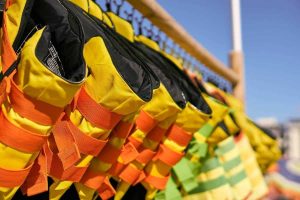
Boating Safety – Life Vest And Life Jacket Types
Boating is one of the greatest pastimes of our day. There’s something about the water and sun that will fill you with so much joy that it seems like a taste of heaven. Boating is going to give you so many unforgettable experiences. The kinds of experiences that you can’t get anywhere else. This is why if you are considering getting into boating, you should go for it.

Boat Information By Type
© 2023 Boating.Guide, A Hyperwave Media Group Ltd. Publication.
Privacy Overview

Catamaran Across the Atlantic: Times, Routes and Dangers!
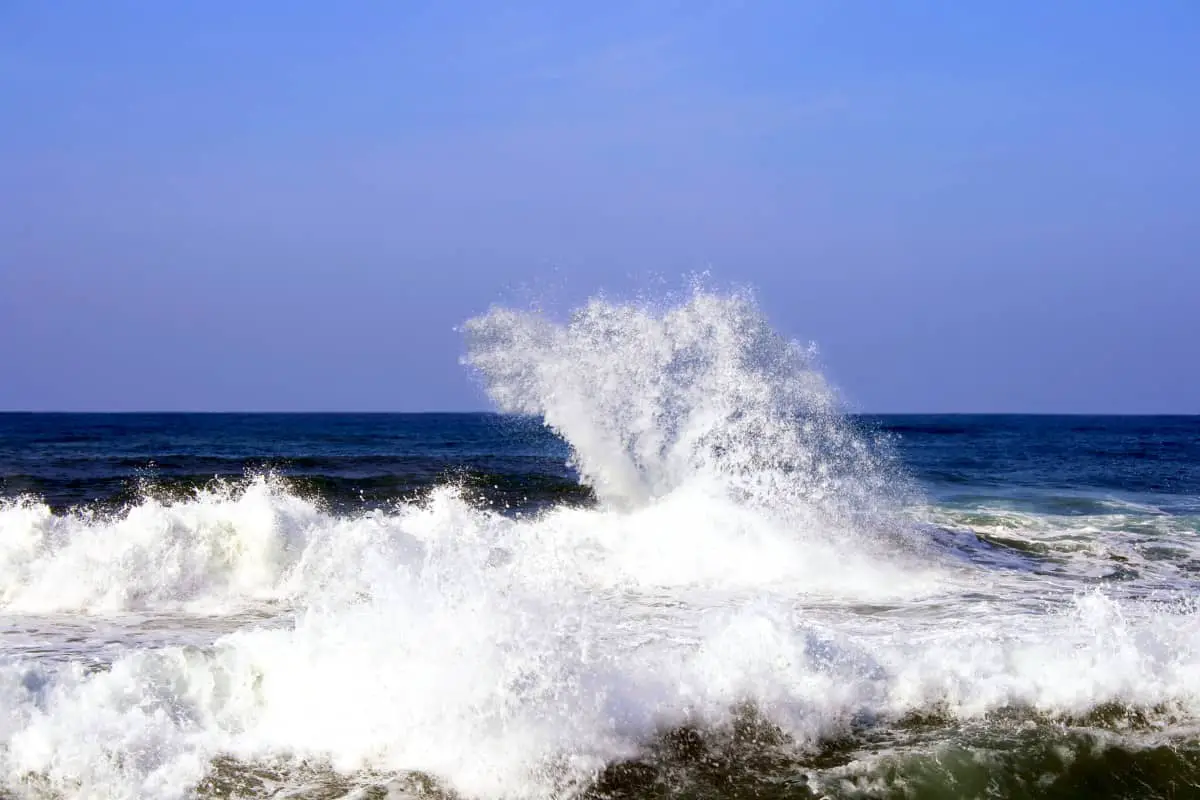
As an Amazon Associate, we earn from qualifying purchases. We may also earn commissions if you purchase products from other retailers after clicking on a link from our site.
For many, the idea of sailing across the Atlantic in a catamaran and spending the summer sailing around the Mediterranean or Caribbean sounds like the ideal form of retirement. While cruising the open sea is certainly an adventure of a lifetime, you need to have an idea of the amount of time your voyage will take so you can stock up adequately and plan ahead. So, how long does it take to cross the Atlantic with a catamaran?
Crossing the Atlantic Ocean with a catamaran normally takes three to four weeks. The exact duration of your voyage may vary depending on wind speed and patterns, the path you take, and the speed of your catamaran.
As complex as sailing is in itself, taking a voyage across the open ocean on a sailboat at the mercy of the wind is even more complicated. Read on to learn more about the complexities of sailing across the Atlantic on a catamaran, how fast you are likely to travel, and more.
Table of Contents
The Voyage Across the Atlantic
One of the largest challenges people face when sailing is finding consistent wind blowing in the correct direction. Wind patterns are one of the main determinants of navigable sailing routes.
After hundreds of years of sailing across the Atlantic, multiple routes have been discovered, but not all are deemed navigable. Generally, sailors tend to favor these two routes:
- The Southern Passage . This route involves traveling east to west from Europe and Africa to North and South America. It starts from Portugal or Canary Islands off the coast of Northern Africa to the Windward Islands of the Caribbean.
- The Northern Passage . With this route, you travel west to east from the Caribbean to Portugal. You start at the island nation of Bermuda, sail north the Portuguese Azores, and then east to Portugal’s shore.
These routes are based on a series of consistent wind patterns known as the trade winds. Each spans approximately 4,000 nautical miles (7,408 km), with each nautical mile spanning approximately 1.15 land miles (1.85 km).
However, it is generally advised to add approximately 15-20% of the theoretical distance traveled because sailors often need to adjust course to match the wind. That brings the real distance of the voyage to about 4,700 nautical miles (8,704.4 km).
The Impact of Catamaran Speed and Time Spent Traveling
Covering 5,000 miles (8,046.72 km) on a sailboat takes a significant amount of time. While the speed of your catamaran is arguably the biggest determinant of the duration of your voyage, the amount of time you’re willing to be on the move also factors in.
Some people limit their sailing speed during the night, while others cruise at constant speeds. The number of hours you are sailing per day will greatly impact how quickly you cross the ocean.
As for the speed, catamaran’s can max out at around 15 to 20 knots, with some of the fastest hitting speeds of 60 knots. However, the average speed for most sailors is about 5-9 knots. Knots are the nautical equivalent of miles per hour. Moving at the speed of 1 knot means that you are moving 1 nautical mile per hour (1.85 kilometers per hour).
If you were to travel at a speed of 7 knots for 24 hours, you would travel about 170 miles. However, most people move slower than that, meaning you’re likely to cover less than that distance in a day.
The daily range of your catamaran may also factor in. Most catamarans can easily cover 100 nautical miles (185.2 km) per day. That range largely depends on the wind speed and direction, as well as whether you engage the engine. The farther you can travel in a day, the shorter your voyage will be.
What does all this mean for your sailing time? In a phrase, you can control most of the variables.
If you decide to sail your catamaran at 7 knots every day for 24 hours, you will get across the Atlantic in about 24 days (a little more than three weeks).
If you decide to travel at that speed for less time, or go slower or faster for different amounts of time, your voyage duration will change accordingly.
Potential Challenges of Crossing the Atlantic by Catamaran
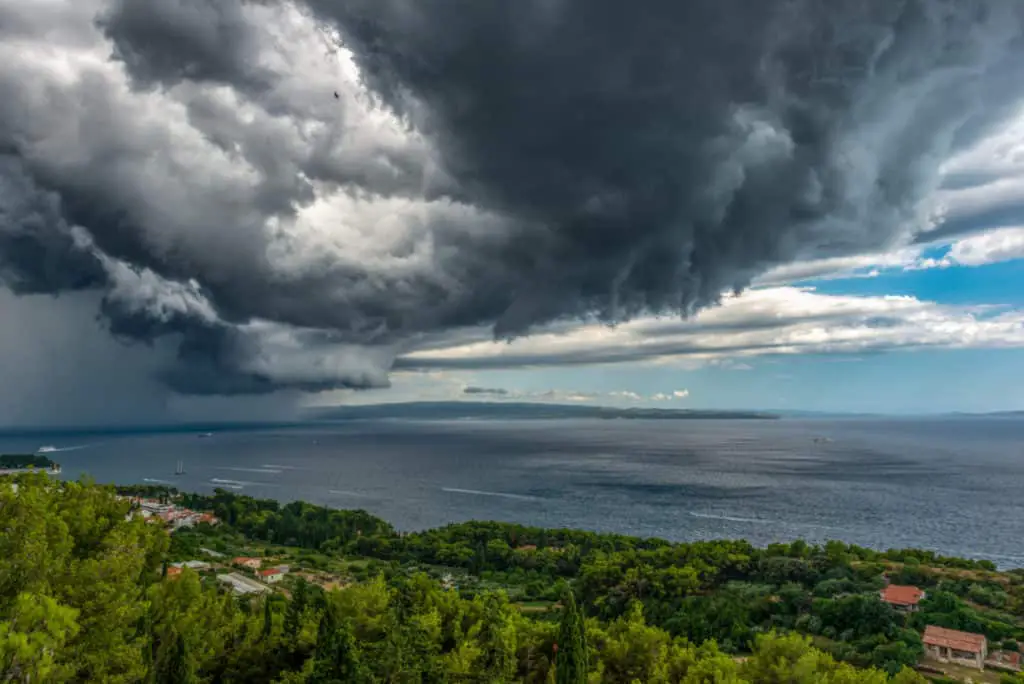
Having understood the length of the voyage and how much time it may take to complete, you’re probably wondering whether there are other difficulties you might encounter. It’s a valid concern, too, because challenges can significantly increase the time you take to cross the Atlantic by boat.
As far as difficulties go, the most critical ones have to do with the weather conditions. Things like storms and rough waters can not only affect your voyage duration, but also your safety.
The good news is that most decent catamarans can take on almost any form of weather with a solid crew at the helm. As long as you are not sailing the Atlantic during a hurricane, your voyage won’t be too bad. With light air and beautiful scenery, crossing the Atlantic can be a phenomenal, hassle-free experience.
But if you are underprepared or do not have the skills to sail, crossing the Atlantic by catamaran will be incredibly difficult.
Storms on the open ocean are nothing like what they are on land, and the wind and waves will be significantly larger than you might have ever seen.
It can be psychologically draining if you are alone in the open ocean. So in addition to making sure that you have the correct supplies and skills, you’ll want to bring a crew or a few friends for company.
Traveling across the Atlantic by catamaran will take anywhere between 21 and 31 days. This can be longer or shorter depending on the speed of the catamaran and the number of hours you sail a day.
Should you decide to cross the ocean by catamaran, be sure that you have the equipment and skills for such a voyage . Hire a crew if you need to, or at least find someone to help and company. Once you do this, you can enjoy your smooth sailing!
- Prokerala: Flight time from Beijing to New York
- Catamaran: How Far Can You Sail a Catamaran In a Day/Month/Year?
- NOAA: What is the difference between a nautical mile and a knot?
- Improve Sailing: How Long Does it Take to Sail Across the Atlantic?
- Calculator Converter: Nautical Miles to Miles
Owner of CatamaranFreedom.com. A minimalist that has lived in a caravan in Sweden, 35ft Monohull in the Bahamas, and right now in his self-built Van. He just started the next adventure, to circumnavigate the world on a Catamaran!
Leave a Reply Cancel reply
Your email address will not be published. Required fields are marked *
Save my name and email in this browser for the next time I comment.
Recent Posts
Must-Have Boat Gear for Catamaran Sailors!
Sailing is probably the most gear-intensive activity I've ever done; there are so many decisions to be made about what gear to buy now, for tomorrow, and what to definitely never buy. The gear on...
6 Best Trailerable Trimarans For Bluewater and Coastal Sailing
Having a boat costs a lot of money, even when you are not using it, marina fees, etc. And once it is in the water most sailors never go very far from their "home marina" and sailing will be somewhat...

Our Catamarans
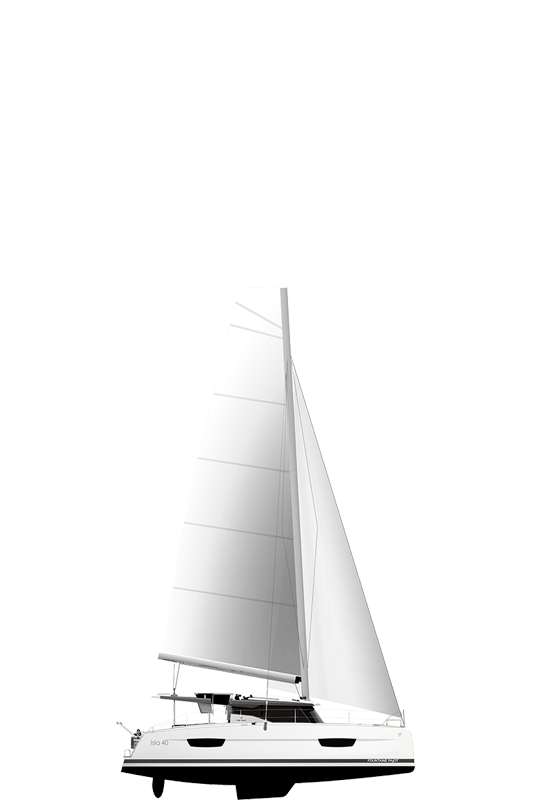
Explore our models in a different way thanks to the virtual marina
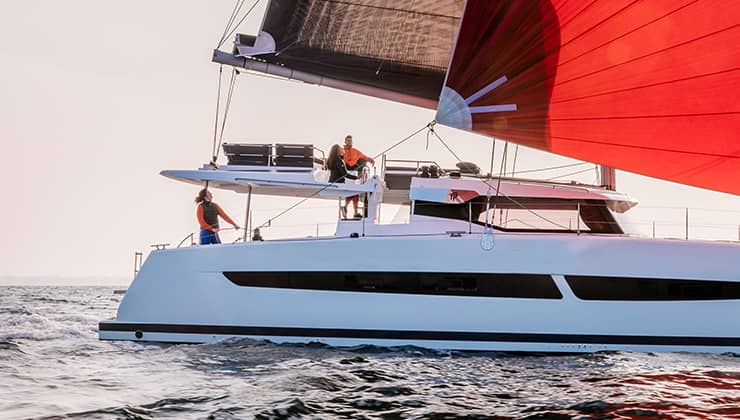
Efficiency through design
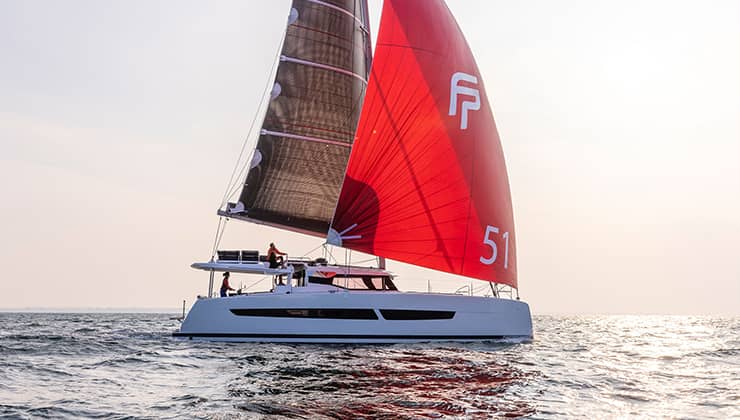
A feel for the sea: sailboats first and foremost
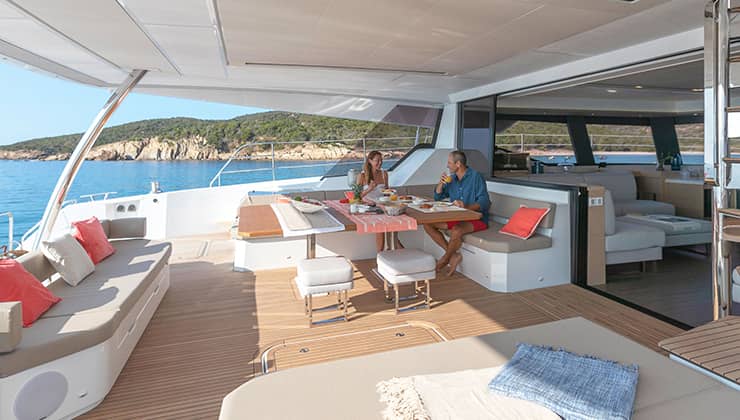
When volume transforms to real space
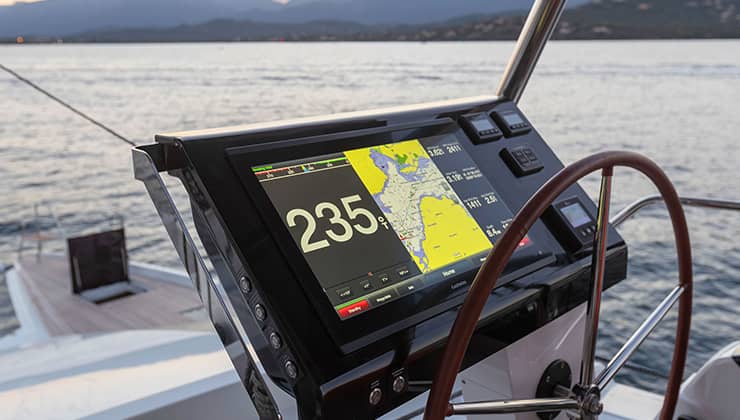
Innovation as a foundation
- Smart Electric
- Virtual marina
- Experiences
A crossing of the Atlantic and then the Pacific aboard a catamaran
My Boat and I
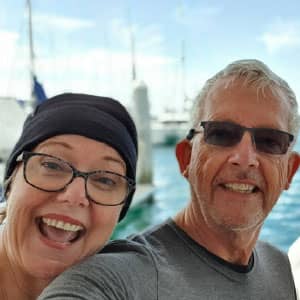
Gordon and Louise
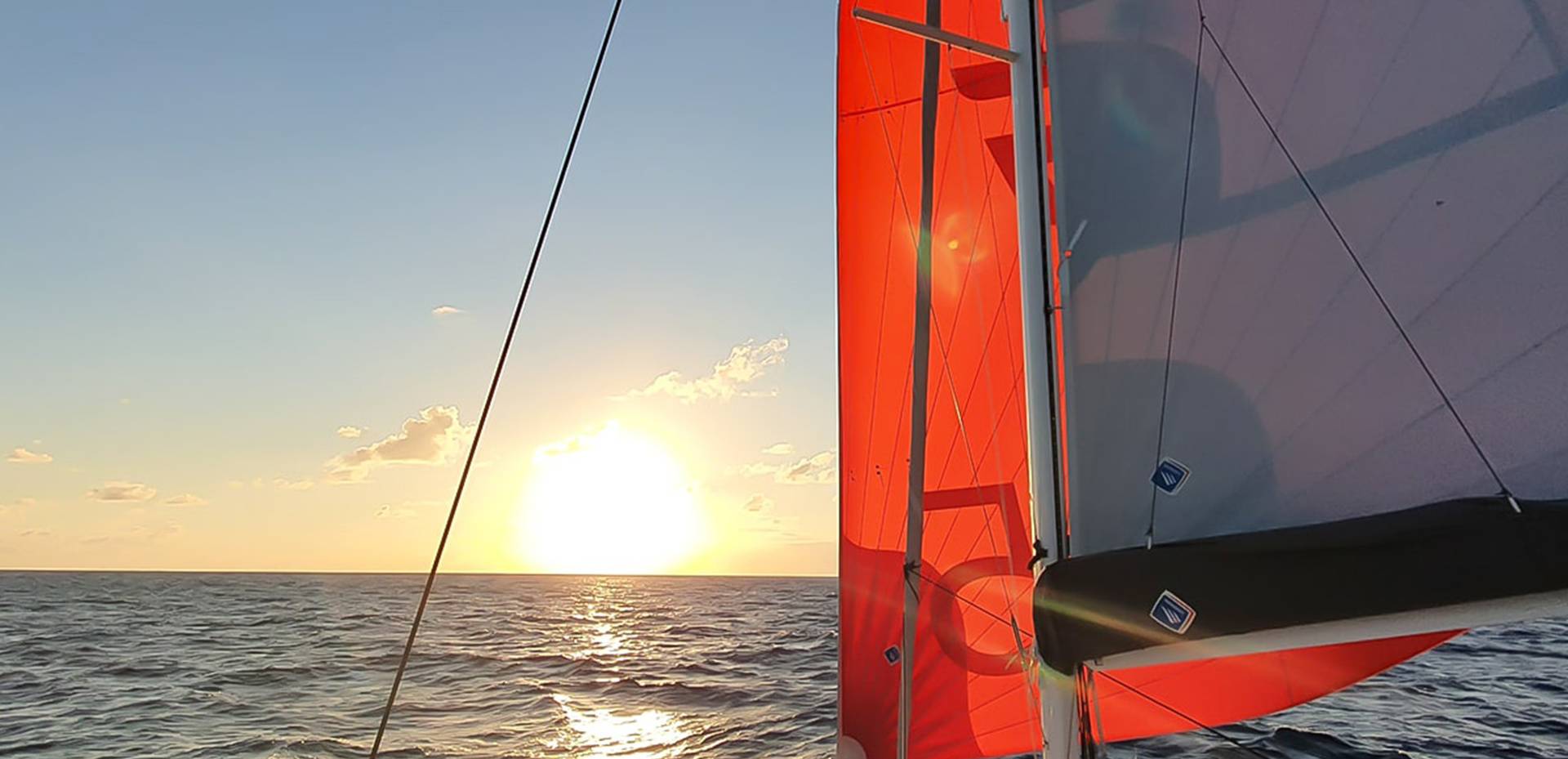
From the Fountaine Pajot shipyard to Brisbane… A fantastic journey
Many Fountaine Pajot Owners choose to come to La Rochelle, where Fountaine Pajot catamarans are built, to collect their new boat and start their maiden voyage from France.
Gordon and Louise, Owners of the Elba 45 hull 1, set sail from Port Cogolin in the South of France bound for their home port of Brisbane, Australia. Fountaine Pajot and their Dealer has followed them along their journey.
From the Strait of Gibraltar to the Caribbean and onward to the Panama Canal and embarking on a Pacific crossing through French Polynesia , relive the images of their best memories, advice and impressions aboard their Elba 45 sailing catamaran .
A beautiful testimony to be discovered on video!

Atlantic and Pacific crossing aboard an Elba 45 / MyBoat&I #4
You may also be interested in
Ep.3 | Set a course for Martinique and Guadeloupe with a fun race
Ceylan and Alfie
Ep.2 | Sailing the Caribbean aboard a Lucia 40 catamaran
Ep.1 | A first Atlantic crossing under sail with a Lucia 40
The testimony of Corina and Roberto, owners of the Samana 59 catamaran hull n°1
Corina and Roberto
Chart a new course and cross the world with your family aboard a catamaran
Brad, Karen, Ben and Charlie
Freediving, navigation and oceans conservation… onboard a Fountaine Pajot
A family sailing around the world. Extended stay in San Blas archipelago
Jean-Philippe, Maryline, Chloé and Célia
Subscribe to the newsletter
Follow the adventures of Fountaine Pajot Owners, discover the latest news and upcoming events, and take part in the development of the Boat of tomorrow!
Compare models
Catamaran Isla 40
Catamaran Astréa 42

Hosting capacity
Motorisation
Technical information
User-friendly areas
Sunbathing Non
Kitchen Non
Sunbathing Oui
Discover the prices
Double rooms
Your contact details
One last step before reaching the next page & discovering the prices proposed & main options for this version! You'll then be able, to schedule a live chat with your local dealer to discuss all the options and configurations available for this model!
Your home port
Any questions?
No pack information currently available online for this Flagship model. We will get back to you directly. Thank you
Would you like to configure this model’s options or set up another model?
Make an appointment with your nearest dealer and choose the boat of your dreams.
- BOAT OF THE YEAR
- Newsletters
- Sailboat Reviews
- Boating Safety
- Sails and Rigging
- Maintenance
- Sailing Totem
- Sailor & Galley
- Living Aboard
- Destinations
- Gear & Electronics
- Charter Resources

Sailing Across The Atlantic In A Catamaran
- By Sheryl and Paul Shard
- Updated: June 13, 2018
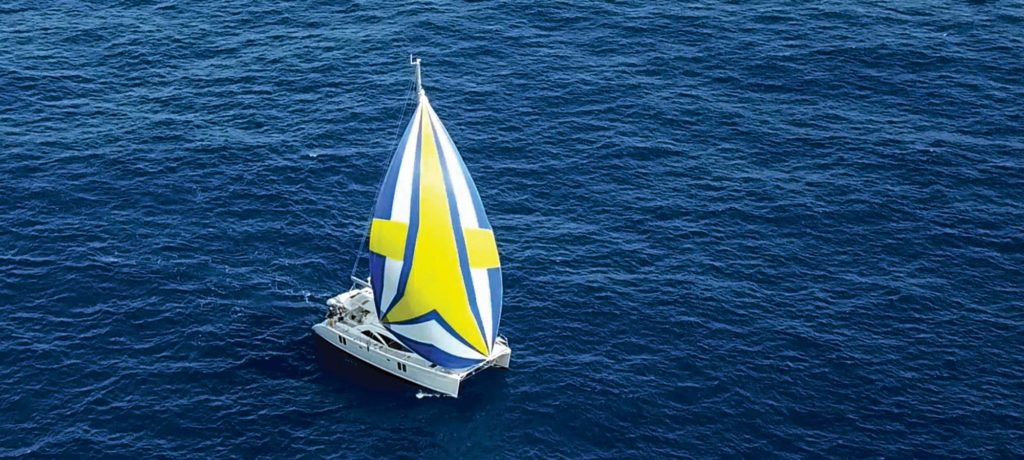
Monohull or multihull? Have you ever gone back and forth pondering the pros and cons of cruising on each? We certainly have, so when my husband, Paul, and I were given the chance to deliver a brand-new Bluewater 50 catamaran across the Atlantic from Las Palmas, Gran Canaria, in the Canary Islands to St. Lucia in the Caribbean last winter, we jumped at the chance. Paul and I have been cruising and living aboard since 1989 and have sailed more than 100,000 nautical miles on the four boats we’ve owned over our nearly three decades of global voyage-making. The boats were all monohulls, but every time we bought a new one, we toyed with the idea of moving to a catamaran. Why? We discovered that we enjoy shallow-draft sailing, which most multihulls offer, as much as we love offshore passagemaking. For long-term living aboard, the space offered aboard most multihulls is certainly attractive. We were proud of our first boat, Two-Step, a Sparkman & Stephens design called the Classic 37, but after a while, we found her depth restrictive as we discovered how much we enjoyed gunkholing and navigating through small inland waterways. Cruising had become a lifestyle for us, and we wanted more space on board plus a few more comforts. Paul and I feel blessed since, as independent television producers and travel-documentary filmmakers, we are able to earn our living while sailing full time, but all the camera, audio and editing equipment we need to carry takes up a lot of storage space. We needed to expand.
The criteria for our next boat was a good shallow-draft design with safe and comfortable offshore capabilities, so multihulls were definitely under consideration. In the end, we stuck with what we knew and ended up choosing a monohull with a swing keel, a configuration that has suited us on our cruising journeys for many years.
Although we are now in the process of building our new boat, a Southerly 480, we continue to be intrigued by catamarans. Feeling out of sorts being “between boats,” we chartered a Voyage 50 catamaran in the British Virgin Islands to get a much-needed sailing fix in the tropics, and spent the time with friends aboard. It was a luxurious boat, with four en-suite cabins with queen berths, and was set up well for chartering, but we wondered what a catamaran this size would be like for serious ocean cruising. We were soon to find out.
Discovery Yachts builds several brands of high-quality cruising yachts, including Southerlys and Bluewater catamarans, and the company reached out to us with an opportunity to deliver a new Bluewater 50 called Zão (pronounced zay-oh by the owners) from the Canary Islands to the Caribbean, leaving Gran Canaria in early November. Zão ‘s owners, John and Caroline Charnley, highly experienced sailors and the newly retired former owners of Discovery Yachts, had family and business commitments until Christmas but wanted the boat moved to the Caribbean so they could enjoy a winter of island-hopping before going through the Panama Canal. They asked us if we would take the boat across to St. Lucia for them. Seeing this as a great chance to sail a purpose-built 50-foot offshore cruising catamaran to learn how it performed on an ocean passage in the many conditions we were sure to encounter on a 2,800-nautical-mile Atlantic crossing, we accepted the offer.
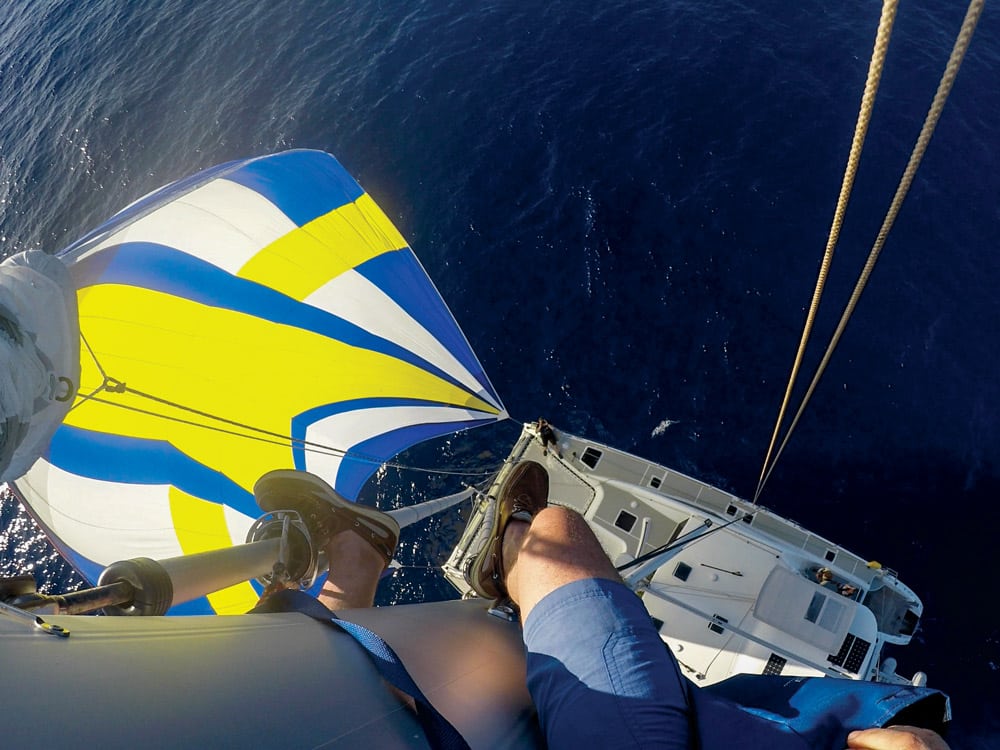
We flew to the Canary Islands the first week of November 2017 to meet up with John and his new Bluewater 50 in Las Palmas. Soon to join us would be four friends as crew, all fellow sailing bloggers and videographers — Alexandra Palcic and David MacDonald of Sailing Banyan ; Dan Krughoff, professional chef and videographer; and sailing vlogger and police officer Craig Bowman, of Cruising Off Duty . All were monohull sailors with some catamaran experience, mostly through chartering. Dave and Alexandra lived aboard their boat in the Caribbean, having sailed from Canada several years ago. Dan and Craig were each in the market for a catamaran for full-time voyaging.
November is a popular time to make the east-to-west crossing of the Atlantic Ocean because hurricane season is officially over and you arrive in the Caribbean in time for Christmas, a nice time to start a winter of exploring the islands. More than 200 boats participating in the Atlantic Rally for Cruisers were descending on the marina in Las Palmas to begin preparations for their ocean run to St. Lucia, as were many other independent non-ARC cruising boats and crews, so it was a crazy, busy, festive place at that time of the year. Las Palmas has one of the best marinas in the Canary Islands for sailors since every supplier and service needed for yachts preparing for an ocean crossing can be found there.
Seeing Zão at the dock when we arrived in Las Palmas was such a delight. Her long, swooping modern lines were a contrast to the more angular-shaped catamarans gathering in the marina. What a difference from the 50-foot cat we had chartered earlier, which, in fairness, was set up purely for vacationing. Zão was designed for long-term living aboard and long-haul passagemaking. This was the second Bluewater catamaran the Charnleys had built, so they had thought through every detail for comfortable living in their retirement but also set the boat up for serious adventure on their upcoming around-the-world voyage.
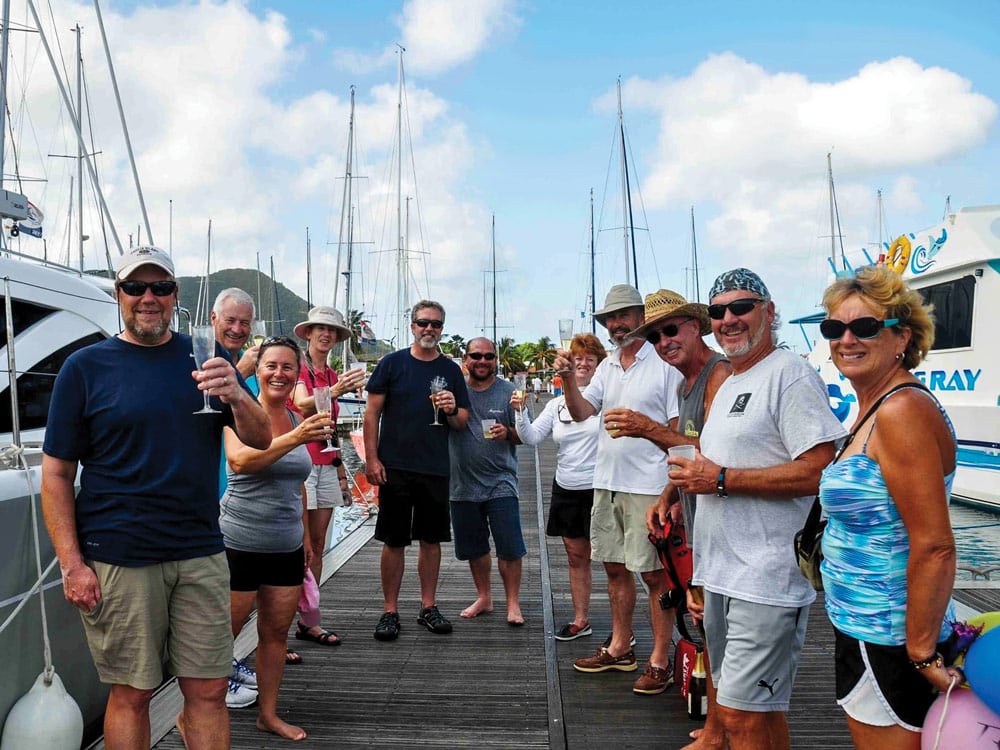
When Paul and I stepped on board, the first things we noticed were the fine table lamps and two free-standing lounge chairs in the main saloon, neither of which appeared to be bolted down. As monohull sailors, this made us nervous.
I asked John about how these were to be stowed offshore. He just smiled.
“You’re on a catamaran now. They will just sit here for the whole passage. You don’t have to stow things the way you do on a monohull,” he assured me. “You can even move the chairs around to watch the large-screen TV.” He continued to grin. This was going to be a very different passage compared to what we’re used to.
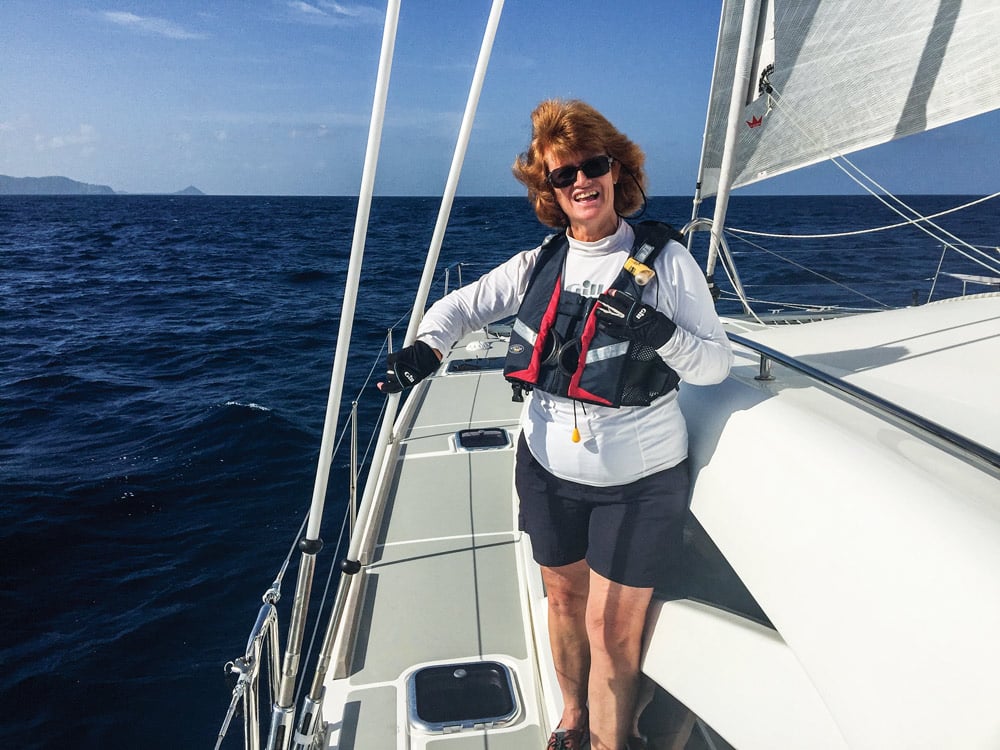
Paul and I had gotten somewhat comfortable with leaving things sitting on tables and countertops while sailing on the catamarans we had chartered in the past, but in the British Virgin Islands we were sailing in the comfortable confines of the protected Sir Francis Drake Channel, not on the open sea. John showed me how the chairs were positioned on the floor with mere strips of Velcro and how the heavy table lamps sitting around the main saloon and navigation station were sitting on nonskid mats. I still wasn’t convinced that once we got some serious waves at sea these things wouldn’t go flying.
The next thing I noticed, as one who loves to cook, was the expansive galley on the bridgedeck, with an all-around view and opening windows into the cockpit. There were large, easy-to-clean Corian countertops, including a peninsula countertop that you could work at from three sides. There would be six of us aboard, and although Alexandra, Dan and I would be sharing most of the meal preparations, everyone liked to cook and would be pitching in, so it was nice to see that there was space for all of us to work.
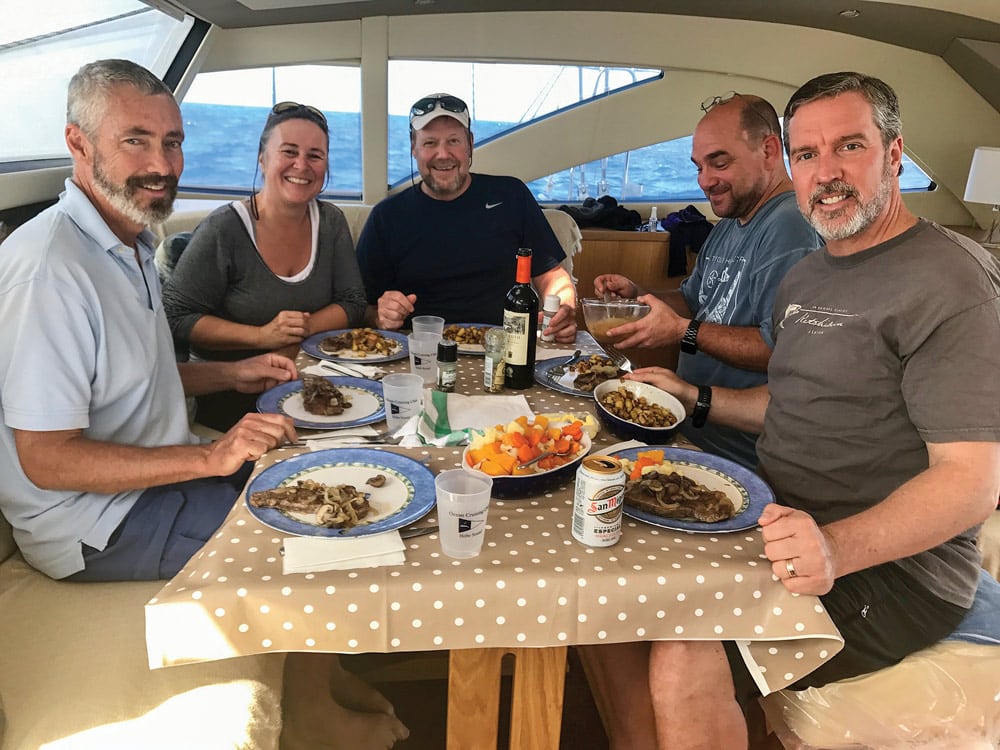
To add to our culinary creativity, there were a four-burner propane stove and oven, a microwave and a large front-opening fridge with two additional fridge/freezers in the owners hull to port. These had exterior temperature monitors and alarms. There were also numerous cupboards for storing supplies, so stowing our provisions was going to be a breeze!
Then Paul noticed a high-powered electric kettle.
“The electric kettle is just for port, right?” asked Paul.
“No, you can plug in this kettle anytime, even at sea,” John told us. “It’s the only one we’ve got or use.”
Paul looked skeptical, thinking of the power drain. Then John explained the electrical system — a hard Bimini the width of the cockpit, covered with solar panels; a 6 kW generator; and a large lithium battery bank. Right. The kettle wasn’t going to be a problem.
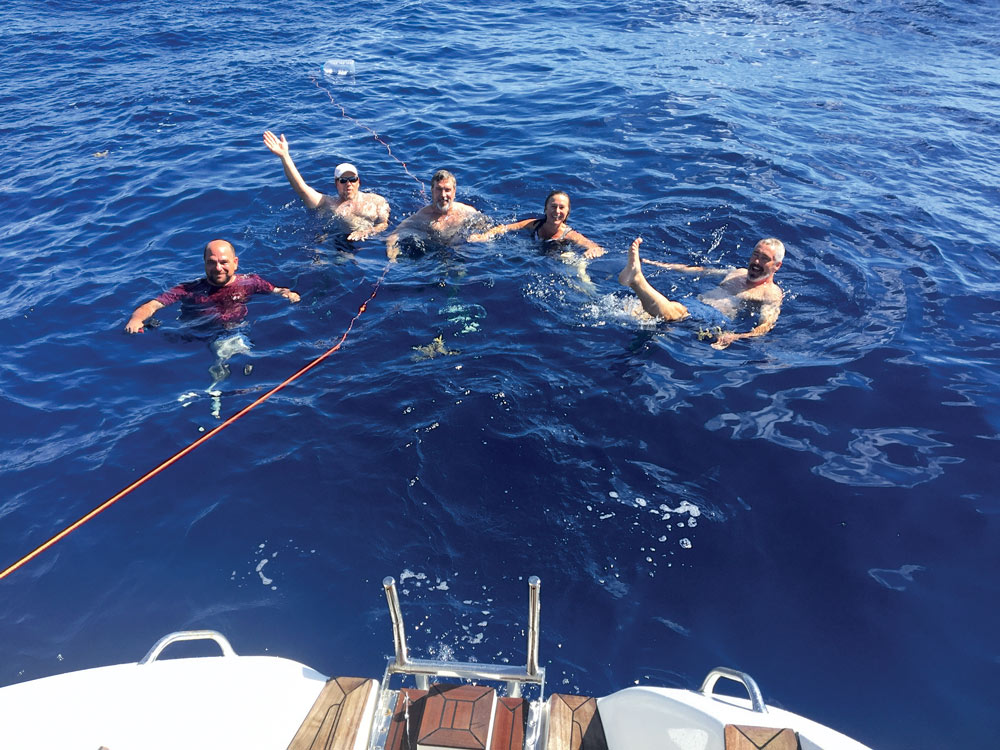
Paul and I made our home in the owners cabin, which featured a queen bunk aft and a head with separate shower and front-loading washer/dryer at the forward end. There were two other en-suite cabins on the starboard side. Dave and Alexandra took the queen berth aft. The forward cabin had a V-insert in the berth, which was removed to make twin bunks for Dan and Craig.
As soon as the crew was settled in, Alexandra and I began the mammoth job of provisioning for a crew of six people with help from Dan and Craig. Dave and Paul went over the boat’s systems with John, organizing repairs, doing maintenance and ensuring that everything was in good working order and that we understood the equipment before leaving for sea. Dan set up and tested our Iridium Go/PredictWind satellite and weather-routing system, and became our communications officer. Everyone pitched in whenever and wherever help was needed.
Alexandra is an impressive organizer and rearranged the contents of all the lockers for ease of access while we were underway, taking notes so we could return things to where John and Caroline had put them. She grouped all like items together, and put things close to where they would be used and where it would make the most efficient use of storage space. Then we started stowing bags and boxes, bottles and cans, long-life cartons of juices and milk, baskets of fresh produce, freezers full of frozen meat and shellfish, pizzas, berries and desserts. Since everyone on board was a foodie, this was not going to be a beans-on-toast cruise across the Atlantic!
This was our eighth transatlantic passage, and it turned out to be the lightest-wind Atlantic crossing we have ever made, with several days of total calm. Where were the trade winds?
Because we’re monohullers who don’t worry too much about weight on a boat, Zão was a bit heavy when we set sail from Las Palmas on November 12. An advantage, though, of a large cruising catamaran is that the boat can handle it, and as we were about to find out, we would be at sea for a lot longer than the two weeks we had planned on.
Fortunately, water usage wasn’t a concern either. Dave ran the generator twice a day during his and Alexandra’s 0800-to-1200 and 2000-to-2400 watch, and made plenty of water with the Dessalator watermaker at the same time. All six of us could have had two showers a day if we’d wanted to — and often did.
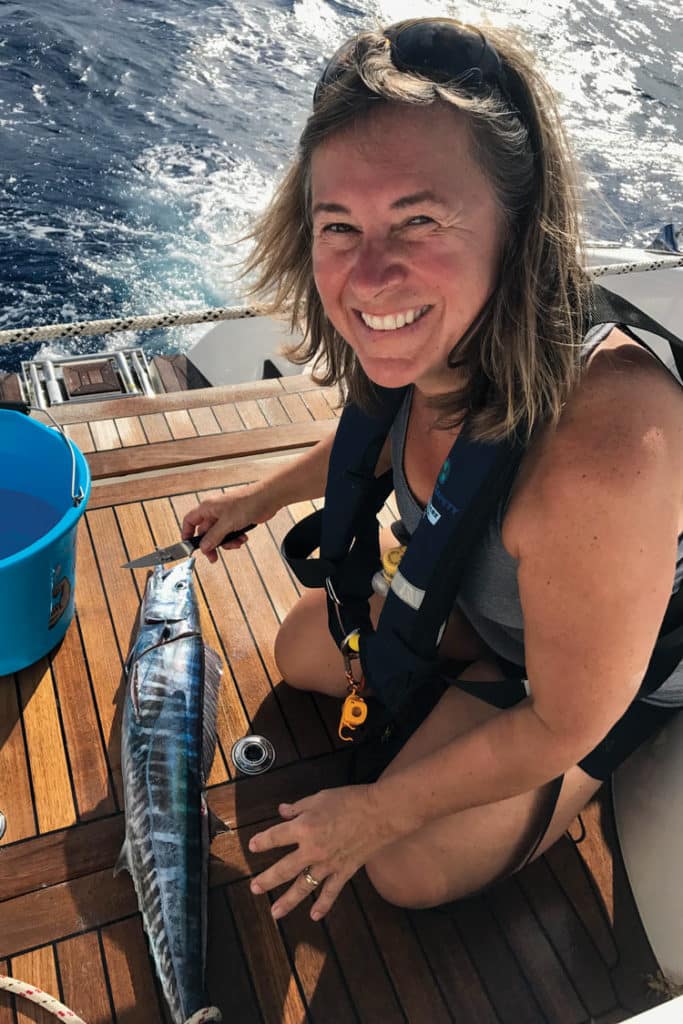
We had light but good breezes the first day out, which helped everyone get their sea legs and allowed us all to get used to the equipment on board and practice handling Zão ‘s sails. The boat has Elvstrøm Epex laminated sails, which hold their shape and work well with the Seldén in-mast furling system. It took us a few tries to get the hang of the furler, so we appreciated Craig’s instruction on how to use it. He has it on his boat. The trick is to maintain tension on the mainsail at all times while furling it. We came to love it and, as a result, we ordered the same for our new boat.
One of the things we didn’t like about the other catamarans we had sailed was the noise of the waves slapping the bridgedeck, which was loud and never rhythmic. It got on our nerves, so Paul and I were rather anxious about how we would handle this on a long passage. However, on the Bluewater 50, the hull shape was designed to counter this, and we found that startling wave slaps happened less often and weren’t as loud or bone-shaking when they occurred. Granted, we never got the big seas we had been hoping for to test out the boat.
This was our eighth transatlantic passage, and it turned out to be the lightest-wind Atlantic crossing we have ever made, with several days of total calm. Where were the trade winds? Like all the other boats around us (we were receiving position reports from the ARC and ARC+ fleets), we all ended up being at sea for at least an extra week longer than planned.
We checked the weather using PredictWind a couple of times a day, and there was nothing but days of extremely light wind or no wind at all in the forecasts. The Bluewater 50 is a fast cat and, thank goodness, handled the light airs well, but we never got the conditions to really put her through her paces.
We started by sailing wing-and-wing using two headsails but ended up flying the asymmetric spinnaker day and night, doing two-person watches around the clock just to keep the boat moving. We all got pretty good at sail trim. When the wind dropped, we doused the sail and, mid-Atlantic, had a swim 1,000 miles away from the closest land. We fished. We cooked. We ate. We slept. We celebrated Thanksgiving. Alexandra baked cakes. We read. We danced. There was lots of room. We chased birds off the deck, which must have mistook us for an island. We shouted with delight when dolphins came to play. Craig flew his drone. We saw amazing sunsets and shooting stars. We played cards, which included a three-week Wizard tournament. We watched TV. Had pizza-and-a-movie nights. We left our cameras and computers lying around. Were we on a boat? It was way too comfortable.
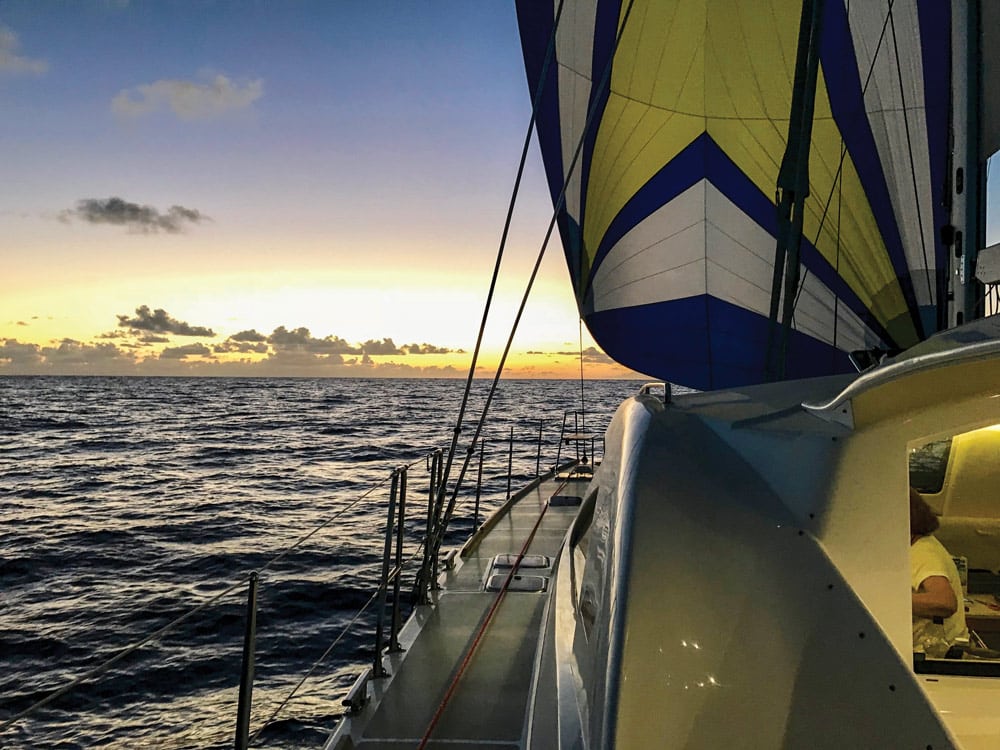
One thing I noticed about passagemaking on a multihull is that I had much more energy than when I go to sea on a monohull. Not being on a heel all the time means it doesn’t take as much physical effort to do simple tasks. Overall, everyone in the crew felt the same. We also dealt with tasks more readily since it didn’t take much effort to get up and deal with things.
Unfortunately, or fortunately, this applied to cooking. We were constantly preparing meals and feasting. No one lost weight as we usually do on a monohull passage, where you sometimes eat minimally since food prep and eating just feel like too much effort at times.
On December 3, 21 days and 3,000 nautical miles after setting sail from Las Palmas, Gran Canaria, we made landfall in St. Lucia. The boat felt enormous as we came into Rodney Bay Marina, but with the twin Yanmar 80 hp diesel engines, we could turn on a dime. Twin screws make even large multihulls easy to maneuver. We were greeted by the happy owners, John and Caroline.
So, have we become multihull converts? Well, we can definitely see the advantages now and understand why for some sailors they are a good choice for cruising. It all comes down to what works for each of us. After all, it’s love for being on the water that all cruising sailors share — be it on one hull or two.
Sheryl and Paul Shard have been living the cruising dream for nearly 30 years. Together they have traveled more than 100,000 miles under sail, including eight Atlantic crossings. Learn more about the Shards’ adventures and their TV series, Distant Shores, on their website .
- More: atlantic , bluewater sailing , canary islands , catamaran , discovery yachts , monohull , multihull , Sailboats , st lucia
- More Sailboats

Sailboat Preview: Neel 52

For Sale: 2017 Leopard 48

For Sale: 2018 Beneteau Oceanis 41.1
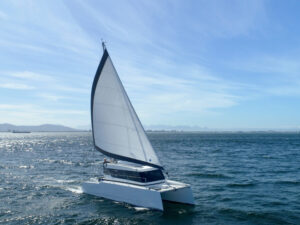
Meet the HopYacht 30

PredictWind Introduces PredictCurrent App
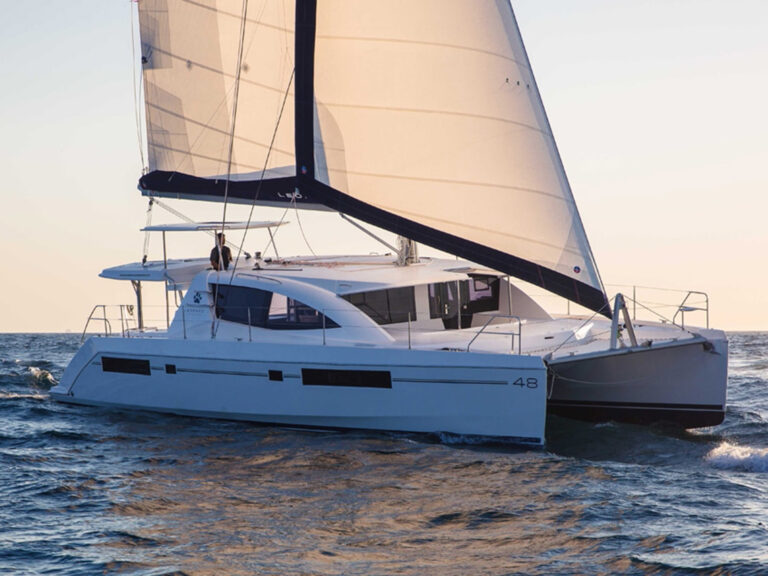
Bitter End Provisions: Rising from the Storm
- Digital Edition
- Customer Service
- Privacy Policy
- Email Newsletters
- Cruising World
- Sailing World
- Salt Water Sportsman
- Sport Fishing
- Wakeboarding
Preparing to cross the Atlantic
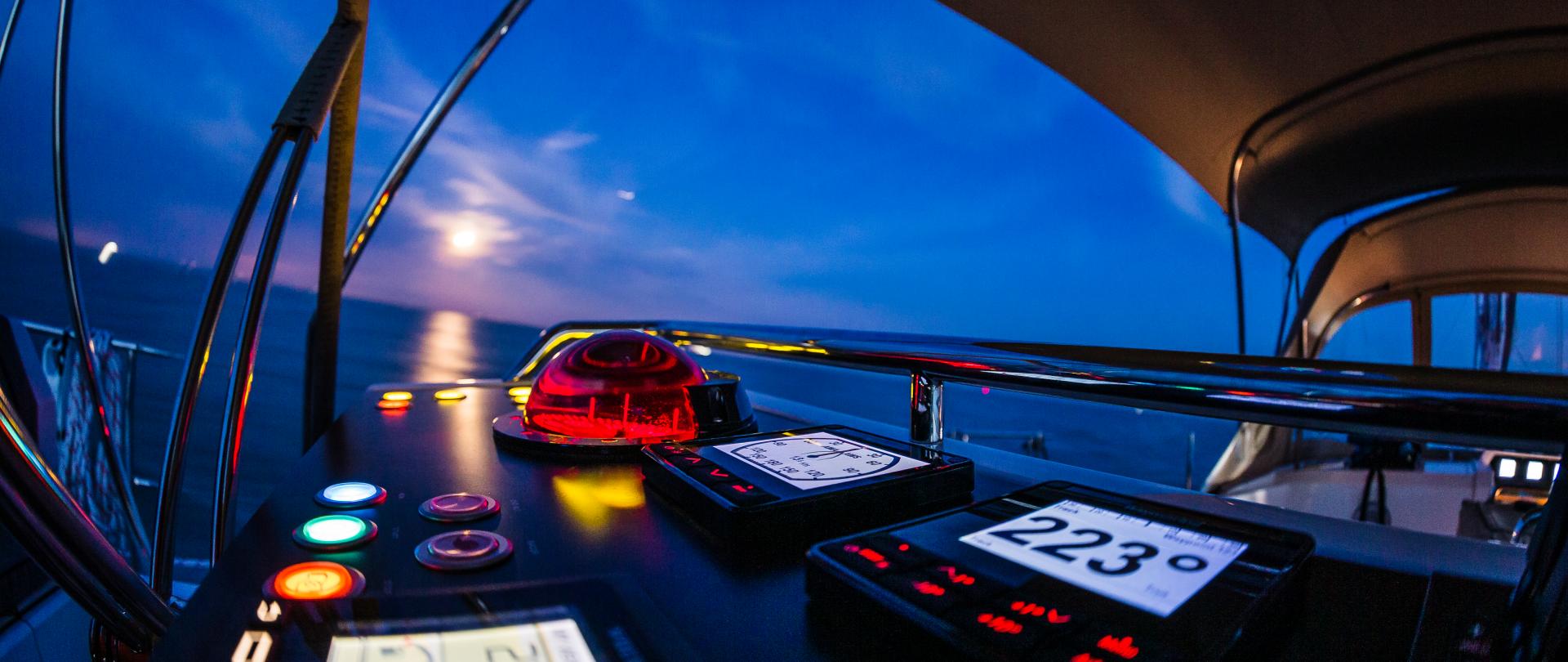
We always encourage the Oyster Family to explore and achieve new sailing experiences. And completing an Atlantic crossing is the dream of many a sailor. But the sea can be a formidable mistress so it pays to prepare well, making sure everything is ship shape before a longer ocean passage, right down to the last sail tie. Oyster Crew member Leandra Sewell details how she and her crewmates prepare for an Atlantic crossing aboard their Oyster Yacht.
PROVISIONING
I don’t need to explain why taking the right foods for a longer sailing trip is so important, but here is a quick guide to the provisions we take:
- The number one rule is to take foods that will keep for a long time. Dry store goods – tinned foods, pasta sauce, cup-a-soups, crackers, tea, coffee, cereals, bread flour, long-life milk and water; not forgetting easy to grab snacks such as nuts, dried fruit, cereal bars, chocolates, biscuits, crisps. Baking ingredients let you cook on the move, and who doesn’t love finishing a night watch to the smell of freshly baked bread?
- Fresh fruit and vegetables that keep well and can be kept out the fridge for a long period are important. Apples, oranges, pears, grapefruit, unripened avocados, unripened bananas, pineapple, mango, watermelon, carrots, corn, potatoes, onions, pumpkin, celery and peppers all fall into this list. When planning meals, it’s important to work around when this produce will start to go off so nothing is wasted.
- Frozen foods are great too, so fresh produce is available throughout the passage. We take frozen vegetables, frozen berries and other fruit that can be thrown in a smoothie. Meat and ready-made pizzas are good and bread can also be frozen and toasted easily.
- Don’t forget – anti-seasickness provisions like ginger biscuits, ginger and peppermint teas, and mints are essential, although hopefully not necessary!
FOOD PREPARATION
Our chef will prepare three meals a day for seven people for +/- 16 days, which is the average time it takes us to sail across the Atlantic. Below are some handy hints from how our chef does this:
- Fruit and vegetables are cut up, portioned and frozen for future use.
- Some dishes are made in advance and frozen – these include lasagne, pies, stews, curries, chilli and soups.
- Wrap fresh herbs and leaves in damp paper towels to make them last longer.
- Home-made dips like hummus are preprepared and we continue to prepare foods like this as we sail.
SAFETY DRILLS
It is important everyone knows their responsibilities in case of an emergency. So we run through all our safety checks and drills to pick up anything that might be amiss before we leave.
- Life jackets must be checked for wear and tear.
- Locations of safety equipment are identified and we remove all the covers and run through how everything works.
- We test the alarms and emergency exits.
- We do a full run through of fire, man overboard and abandon ship drills.
MECHANICAL CHECKS
- We test all the alarms including fire and bilge alarms.
- Start up the generators and engine to make sure they run smoothly.
- Winches and hydraulics are all tested.
- Service intervals on machinery are checked.
- The bow and stern thrusters are tested to ensure a smooth take off once we slip the lines.
DECK CHECKS
Not only do we have the fishing rods ready to supplement our diet with fresh and sustainably caught fish, but we also needed to check the following:
- the jack-stays have been set up and tested to ensure they are tight.
- winches have been set up with the correct lines.
- the stainless steel is polished to protect it from the salt water and do a final wash down.
- all hatches are stowed and locked close, ready to go to sea!
Want to get a feel for the Atlantic Crossing experience?
READ THE ATLANTIC CROSSING BLOG >
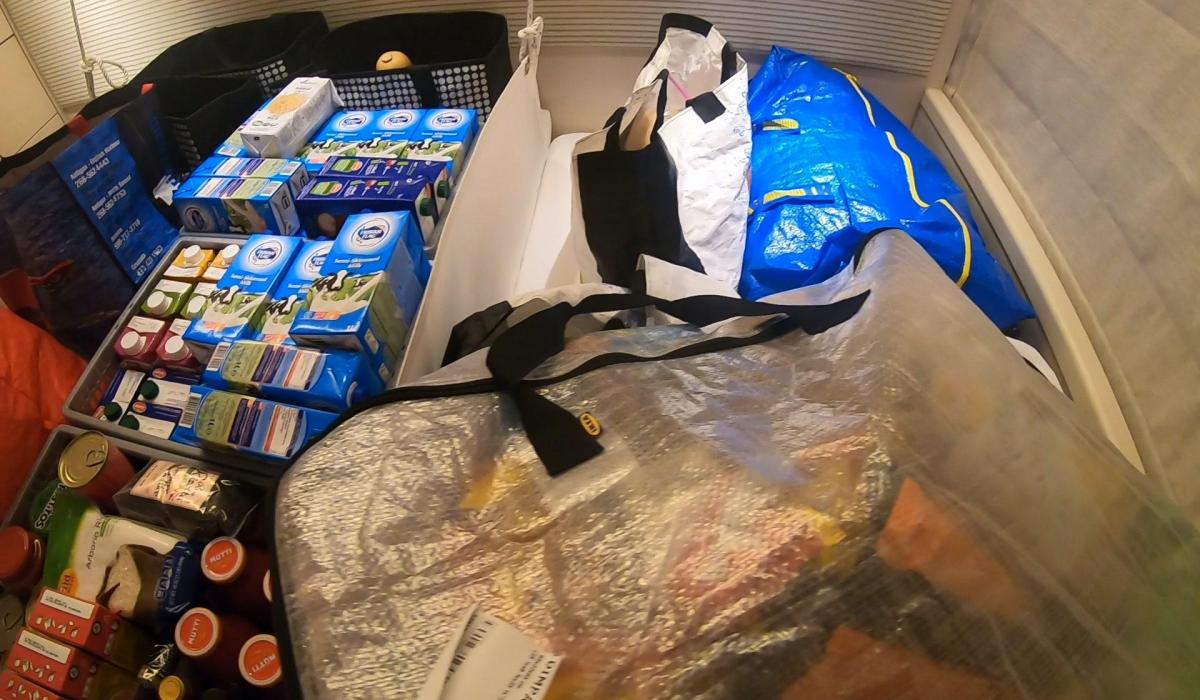
Sign up to our newsletter
Be the first to hear about new launches, exclusive events and all things Oyster
© 2024 OYSTER YACHTS
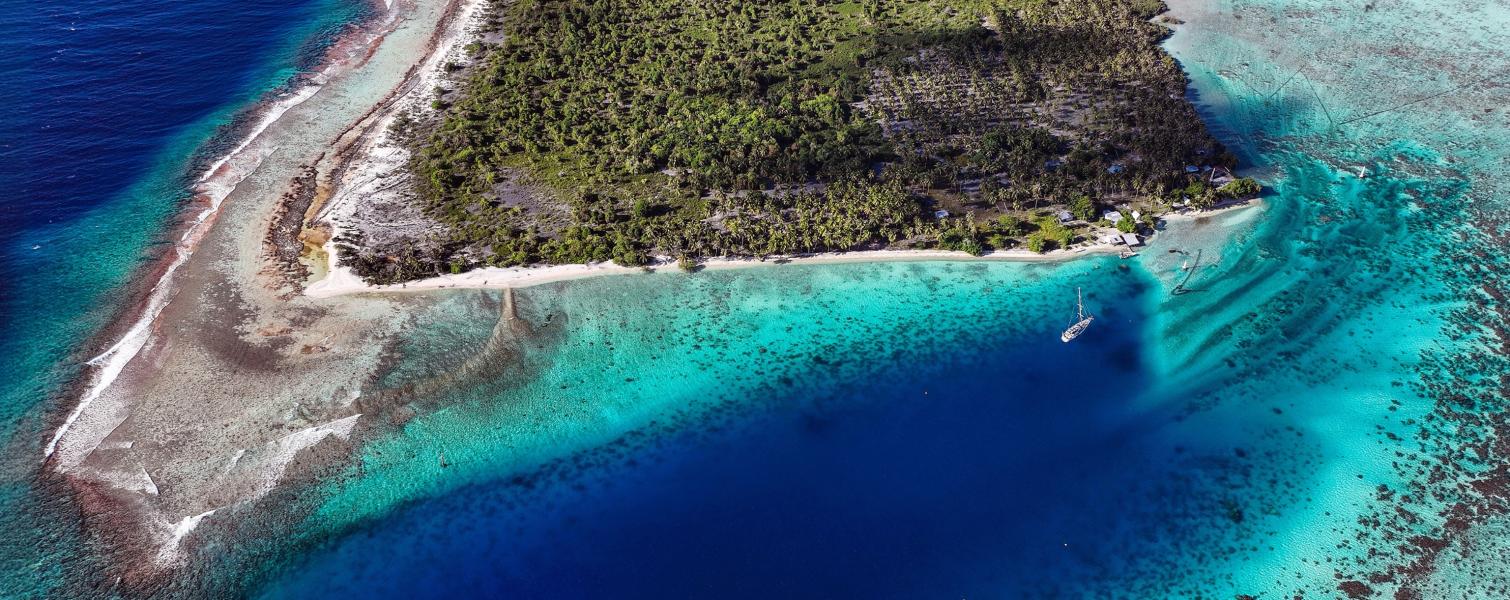
OYSTER WORLD RALLY
Entries for the Oyster World Rally 2028-29 are now open. Embark on the sailing adventure of a lifetime
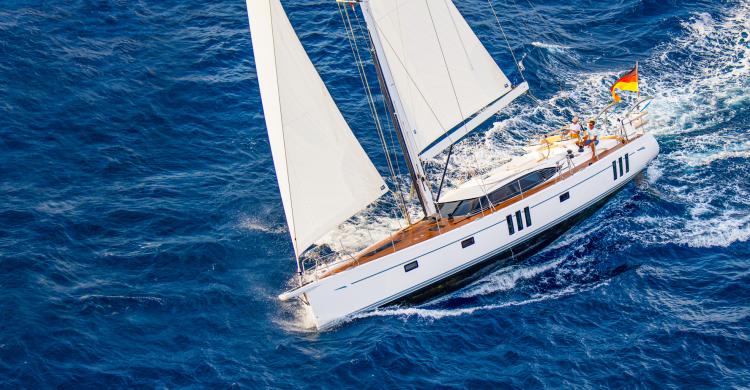
The new 565 Series II
The pursuit of perfection continues
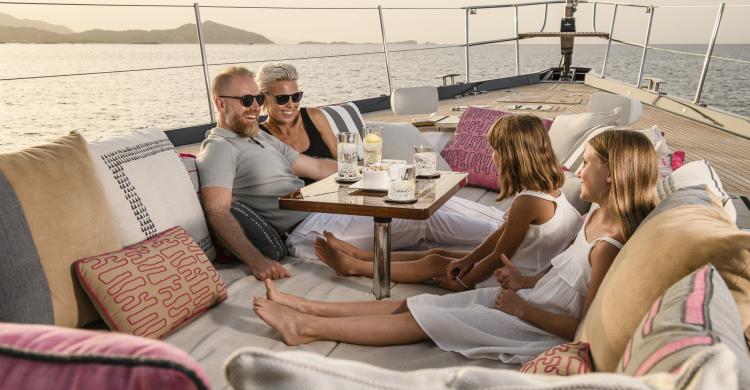
Oyster Charter
Experience exhilarating sailing, luxury and style on an Oyster charter

New 565 Series II
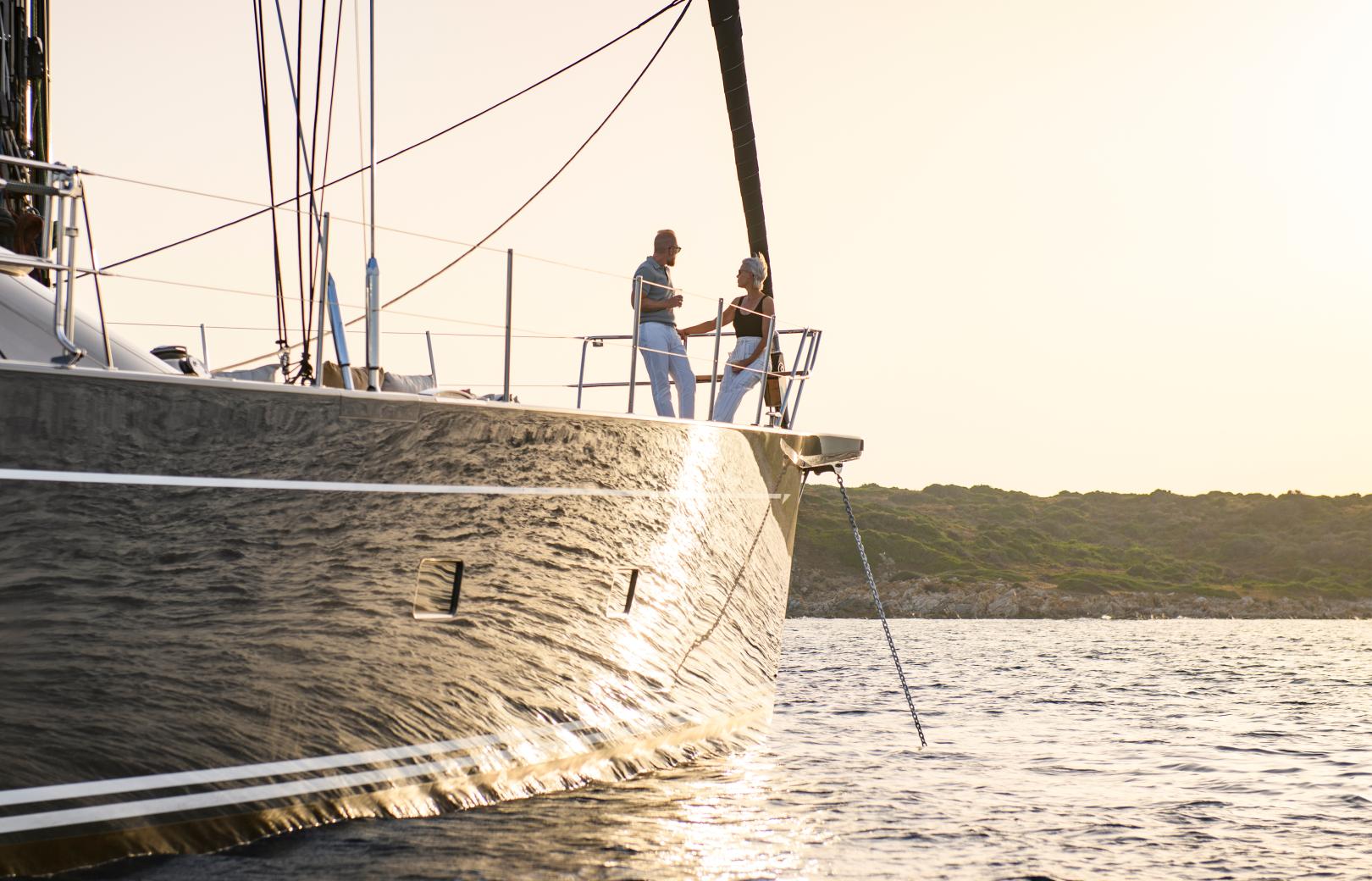
LUXURY CHARTER
Experience exhilarating sailing, luxury and style on an oyster charter. personal, exclusive and uniquely oyster.
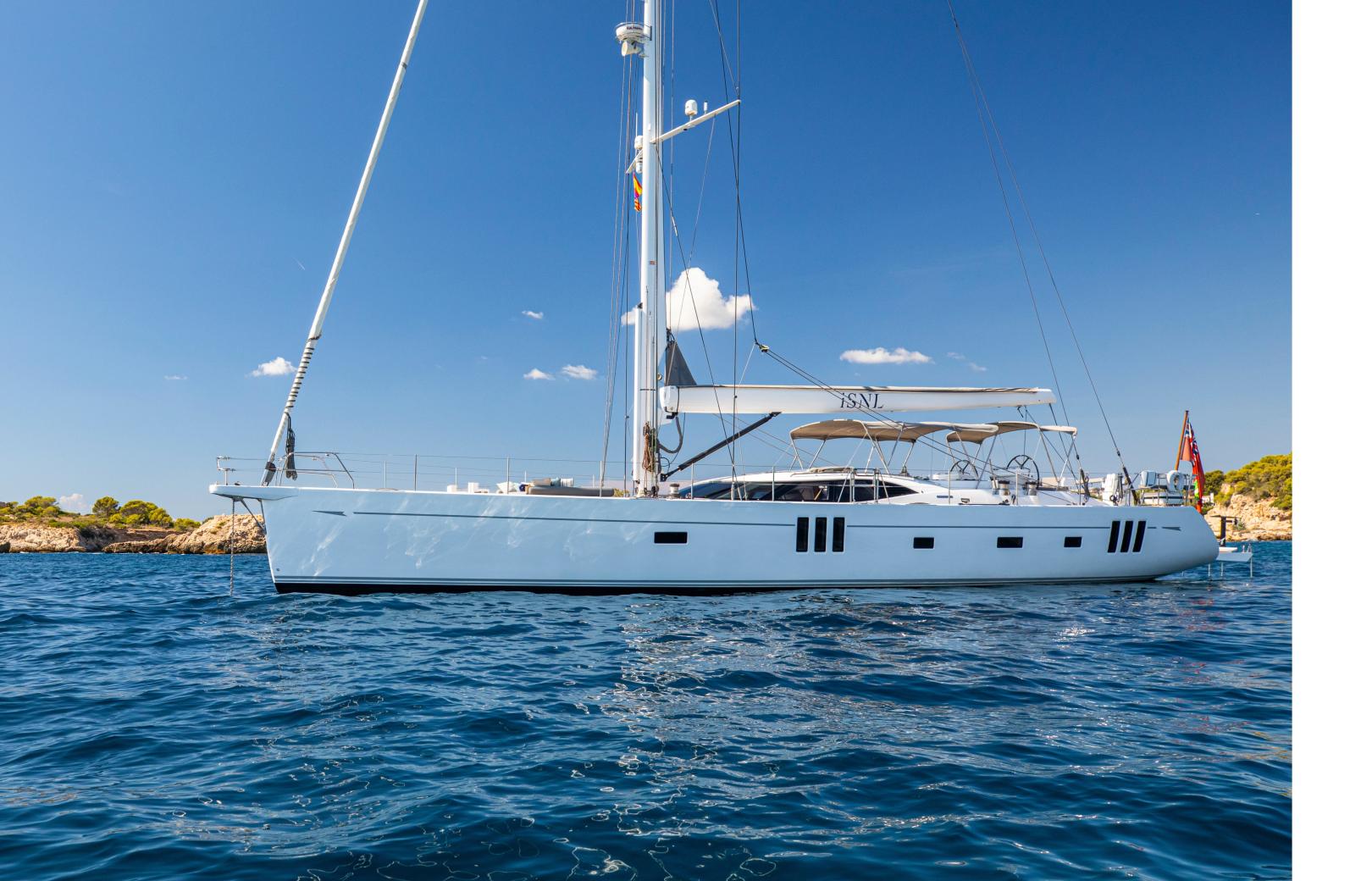
Oyster 825 iSNL
Discover this exceptional late model 825 with a unbeatable spec and a bespoke layout..
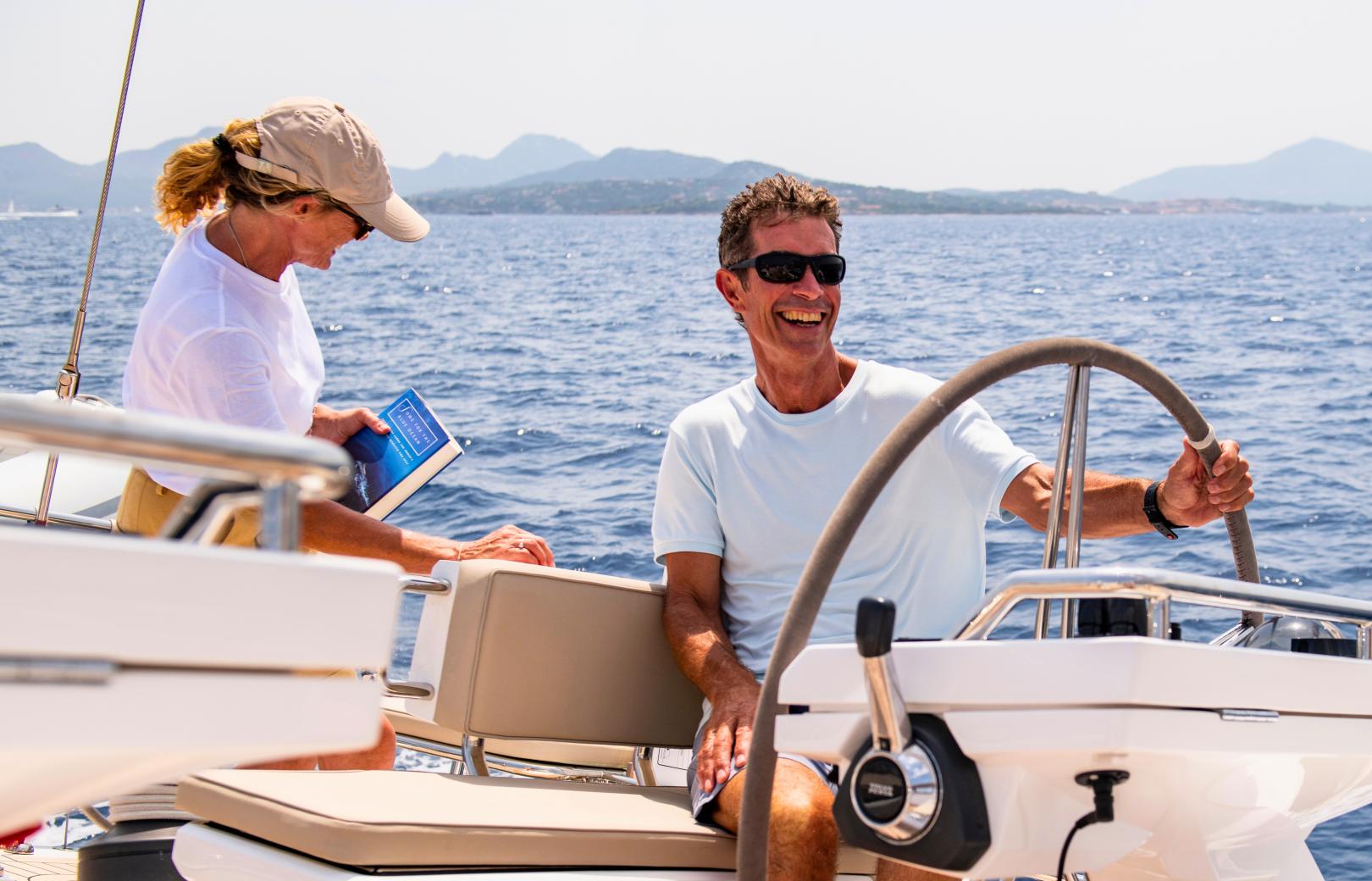
oyster ownership
Personalised care, unforgettable experiences and lifelong yacht support, oyster world rally.
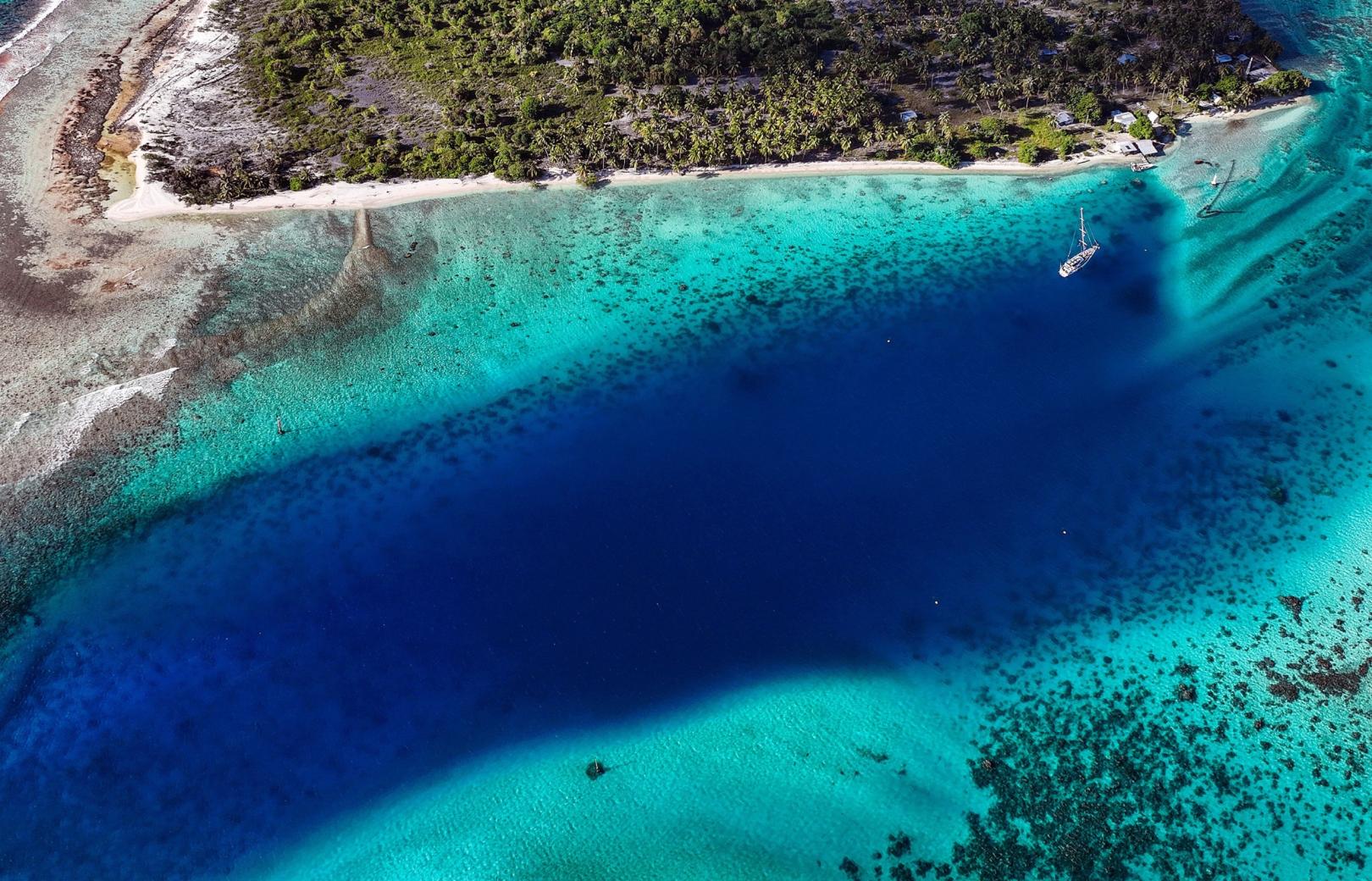
ENTRIES OPEN
Embark on the sailing adventure of a lifetime. entries are now open for the oyster world rally 2028-29.
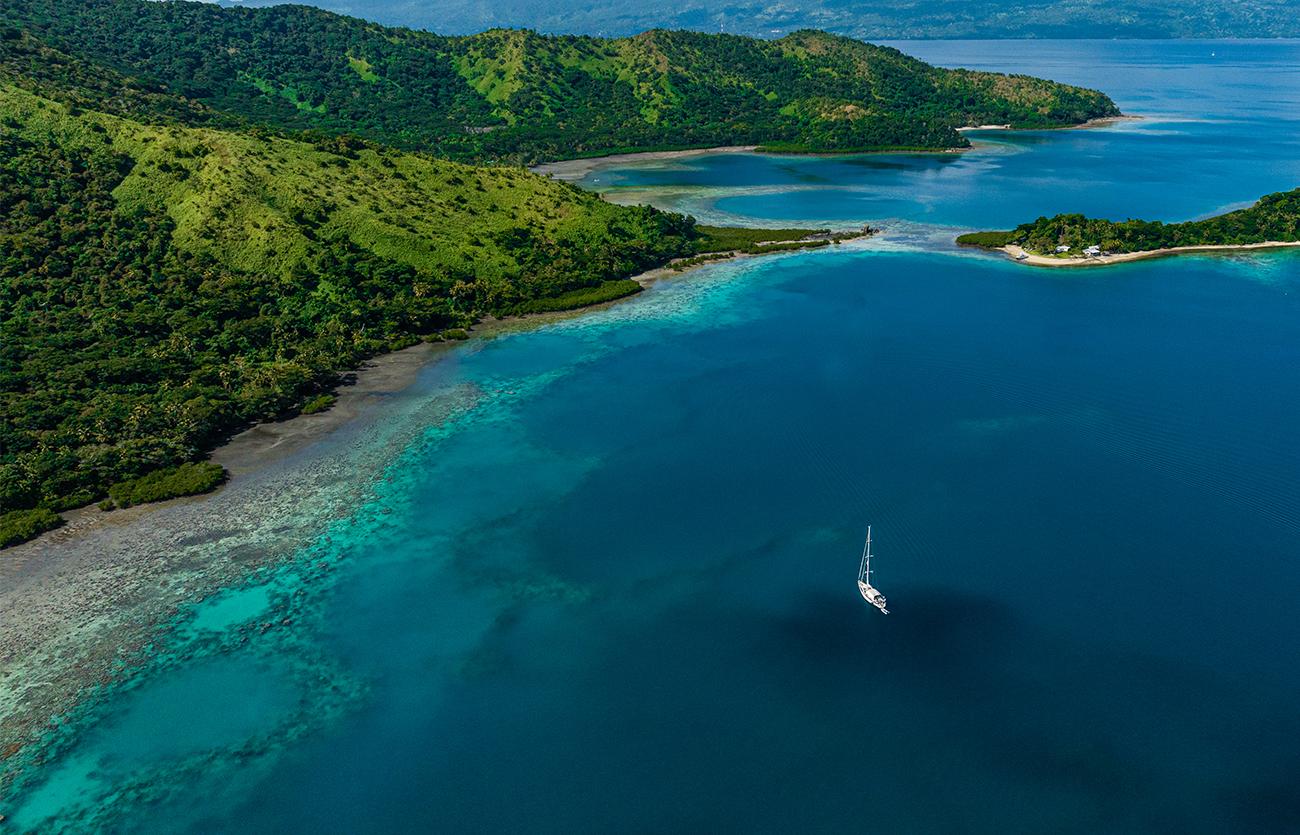

Follow the Oyster World Rally 2024-25 fleet live
Winner of European Yacht of the Year 2023. She sets a new 50 foot bluewater benchmark, offering a stunning combination of sailing performance, comfort, safety and luxurious living space.
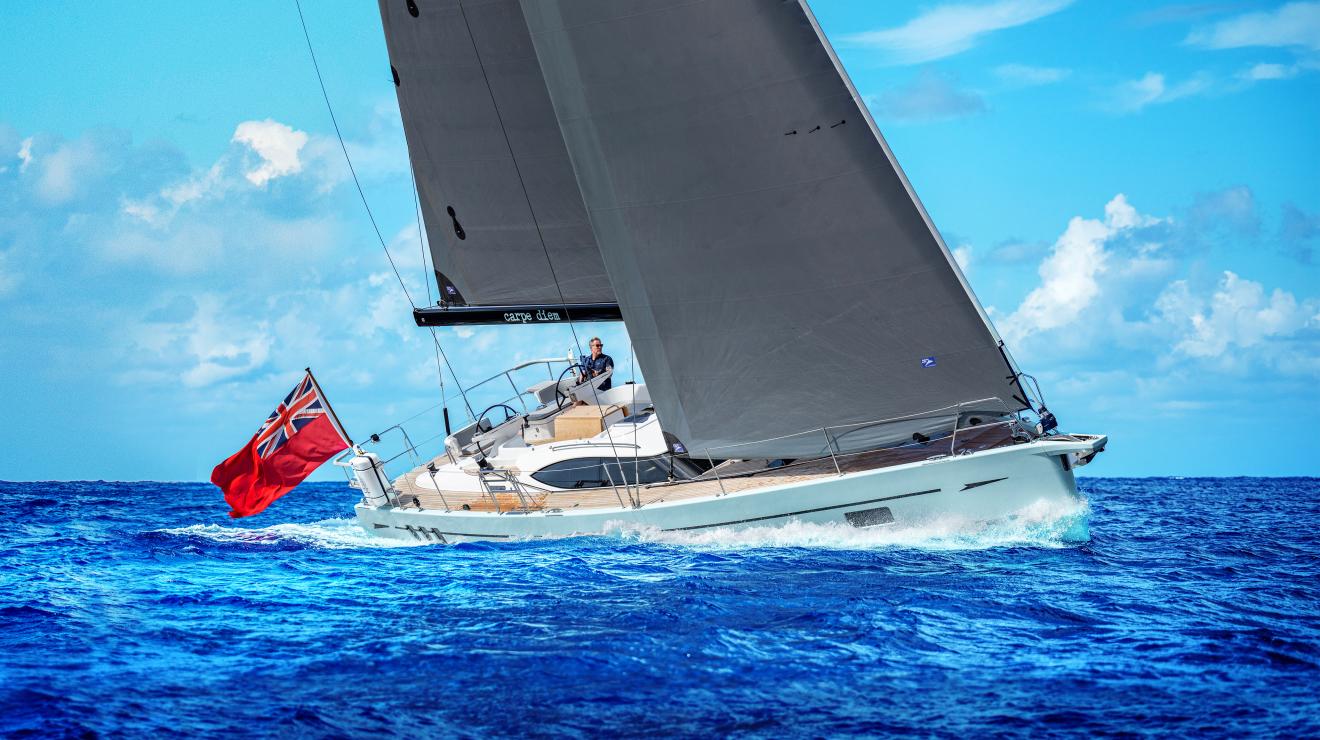
Heralding a new generation of Oysters, this 60 foot bluewater cruiser is a sailing yacht for all oceans. Practical and well-provisioned for long distance sailing or cruising in coastal waters.
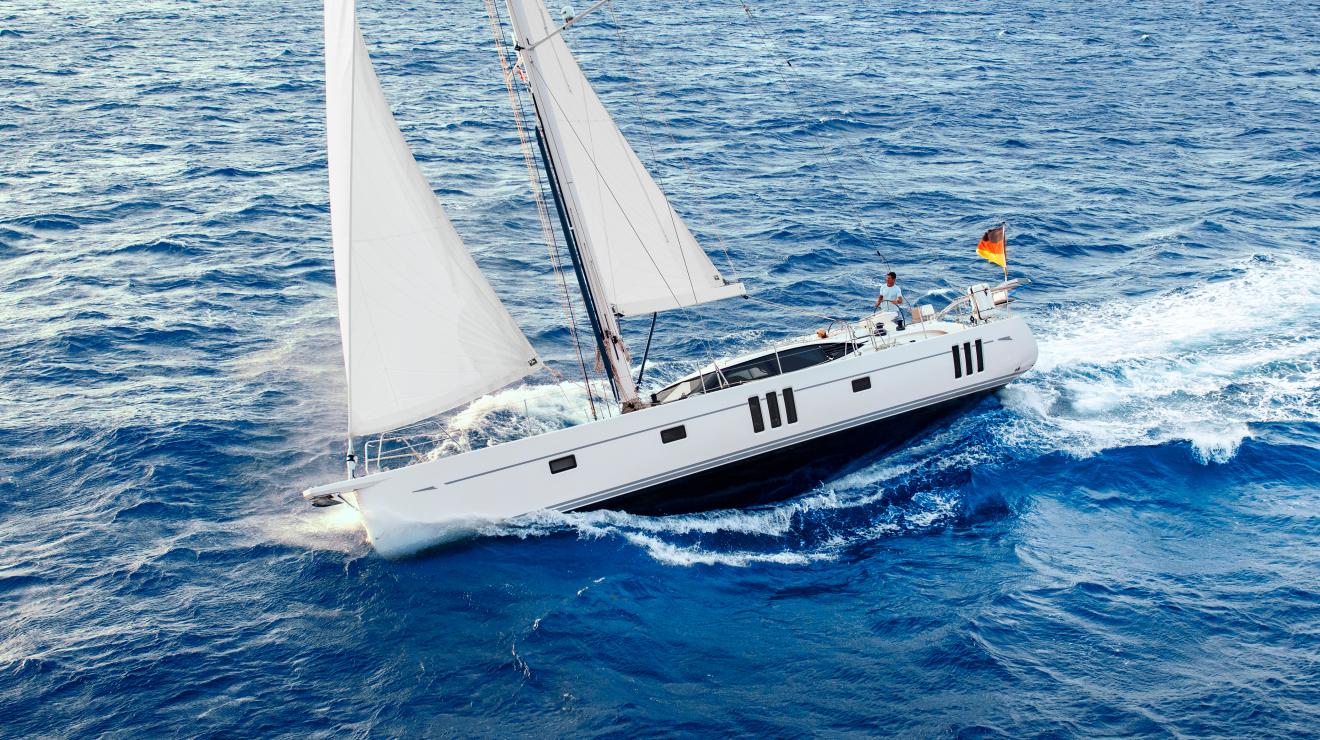
The much-anticipated Oyster 595 is well-proportioned and extremely versatile. Offering exciting, customised build options with no compromise, she is capable of great things.
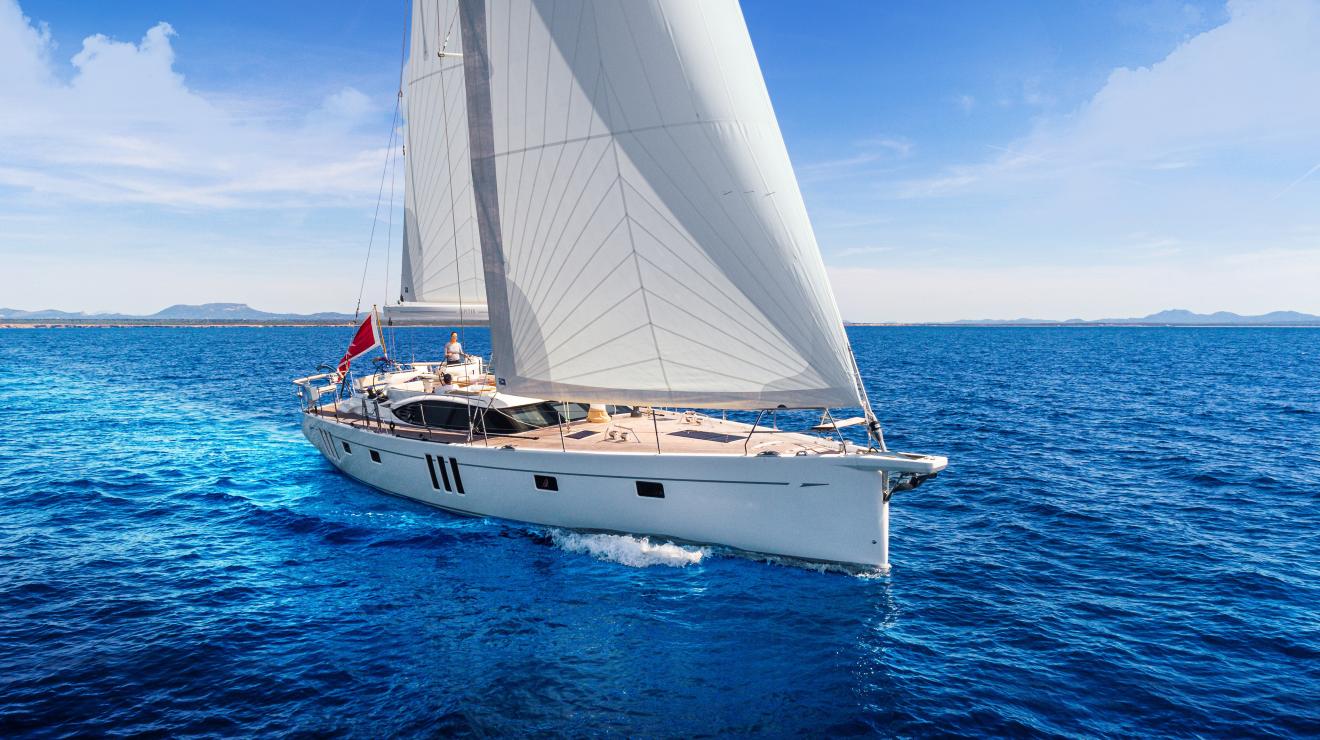
A versatile sub-70 foot sailboat offering the perfect balance of size and practicality. She can be sailed shorthanded effortlessly or take a full crew and up to eight friends and family.
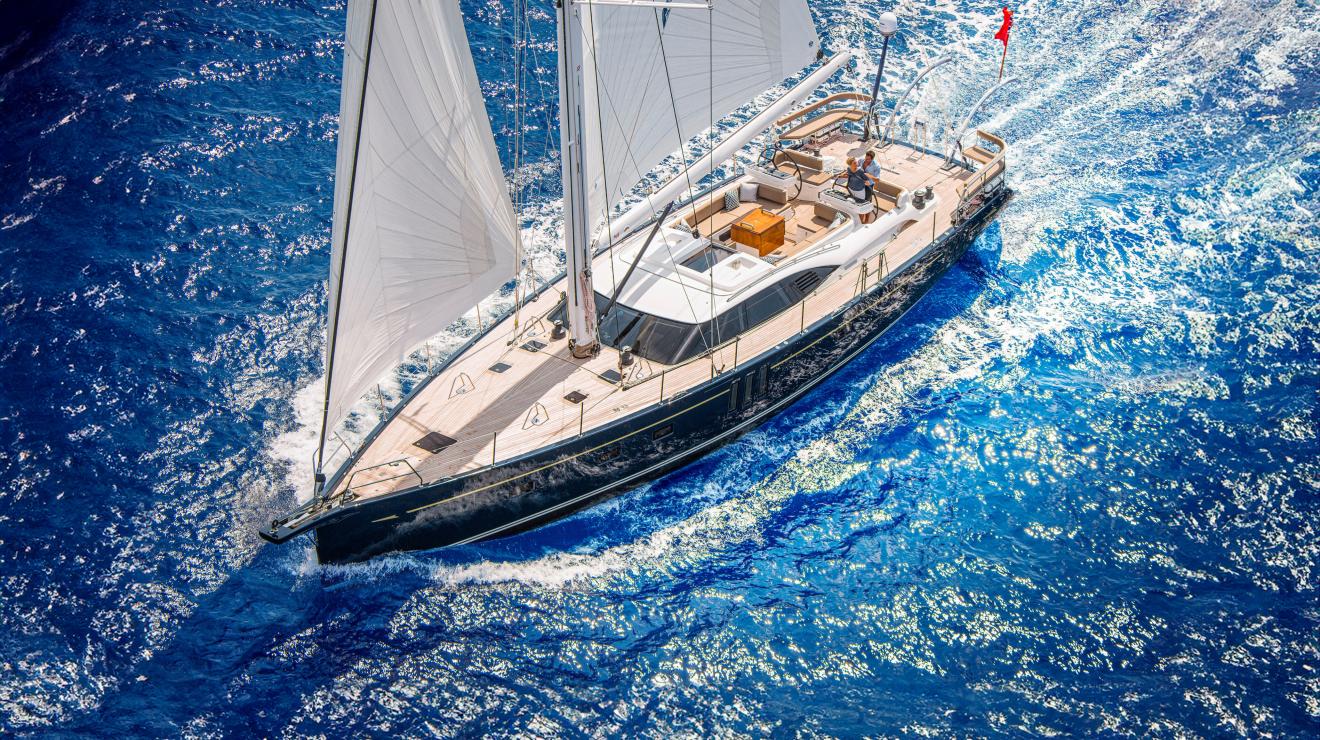
This long range 75 foot cruising yacht is designed for very big adventures. A joy to sail yourself, she also boasts dedicated crew quarters.
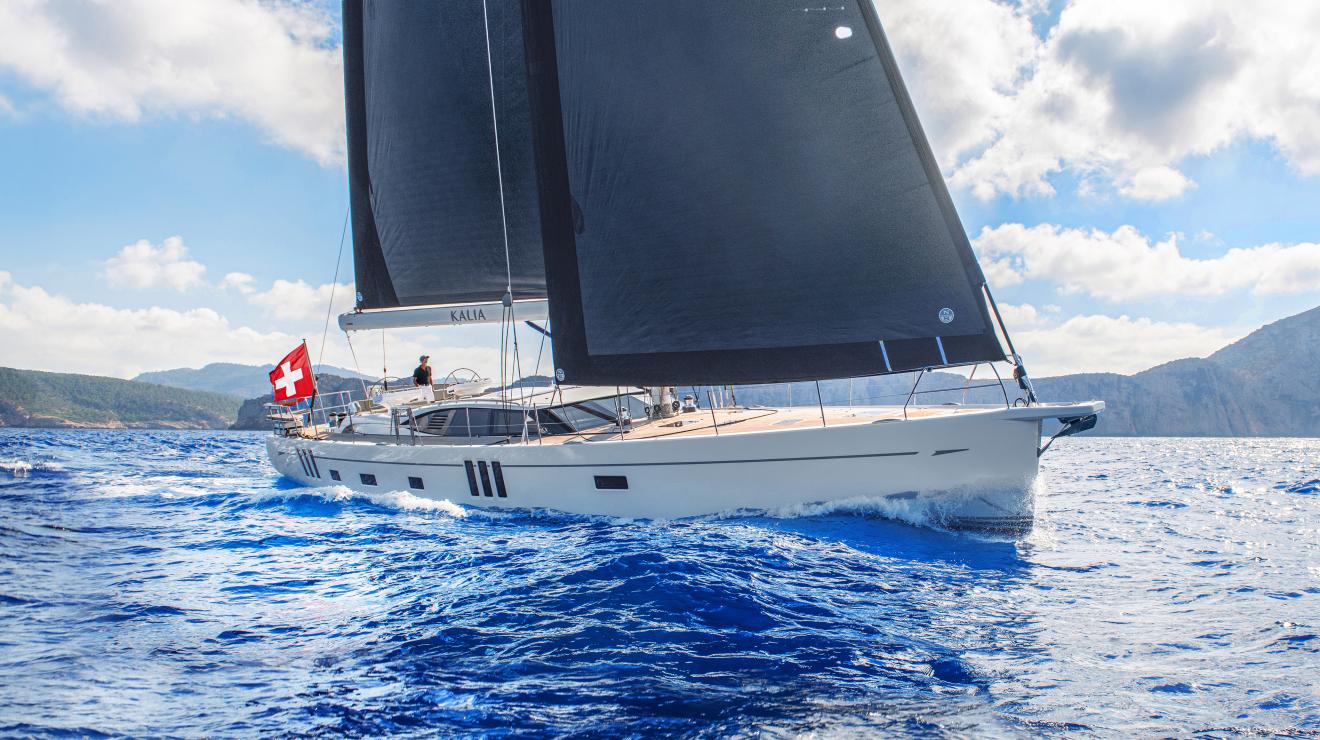
Oyster 885SII
An exhilarating 90 foot sailing yacht, delivering comfort and safety with uncompromising performance. She is capable of taking you anywhere in the world effortlessly, in luxury and style.
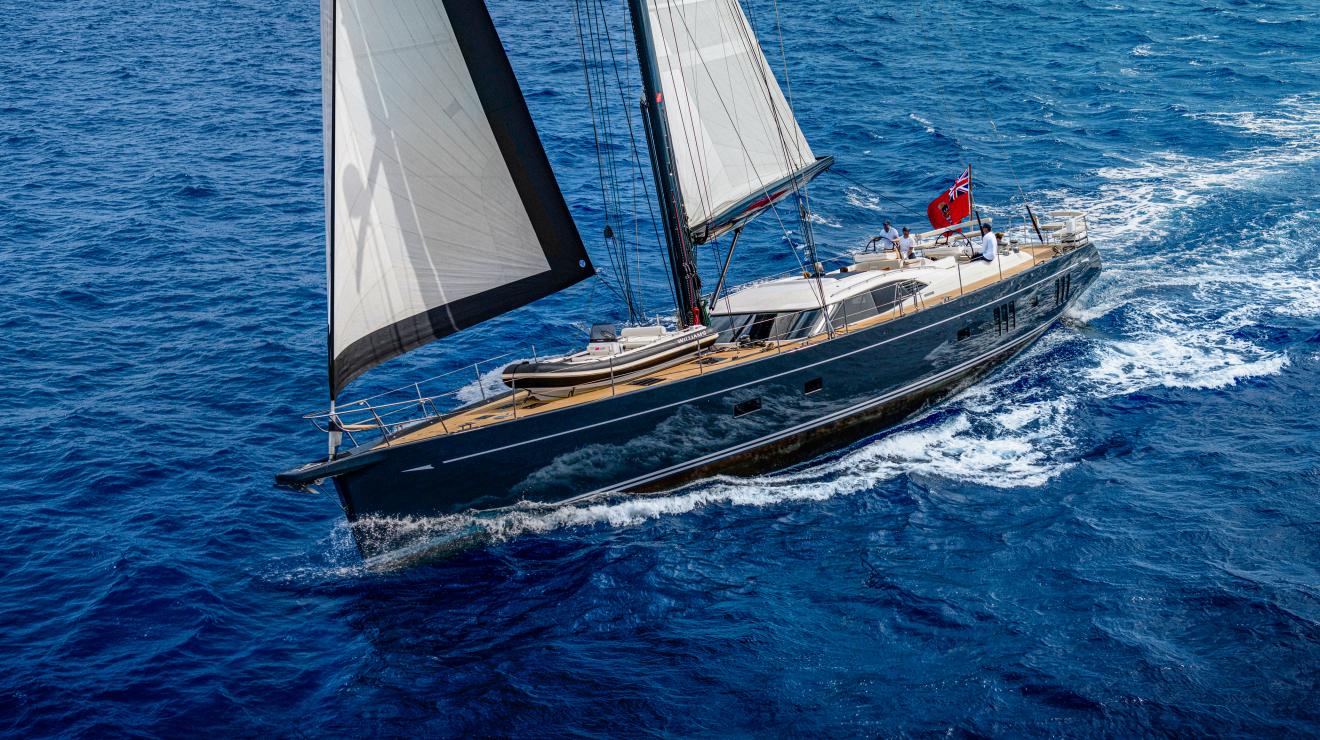
First name *
Last name *
Phone number *
Country/Region *
Attach CV *
Attach covering letter
Current occupation
LinkedIn profile

Crossing the Atlantic on a Lagoon 42 Catamaran
In November of 2022, I joined the crew of the Lagoon 42 catamaran Games Maker II during the westbound Atlantic crossing from Gran Canaria to St Lucia. The boat was part of the 2022 Atlantic Rally for Cruisers (ARC) .
The crew included the British boat owners couple Tony and Lel and their old friend Joz from Australia. Tony is an RYA Yachtmaster offshore with significant experience, including a previous Atlantic crossing. He grew up as a monohull sailor and previously owned an Amel. Lel and Joz were also experienced, both at the RYA day skipper level. So we had all the ingredients for a safe and hopefully fast passage.

My role was to serve primarily as the navigator and to provide advice on sailing tactics. I’m an avid racer so Tony was hoping I could bring some racing tactics to the mix to make us competitive. Although we were not in the racing division (the L42 is not a racing boat), we wanted to sail as fast as possible with the goal of keeping up with the much larger catamarans in our division. Specifically, we were part of the Multihull B division that included production non-performance cats under 50 ft. Most cats in the division were in the 45-46 foot range. We were the third smallest cat in the fleet, only larger than a single Lagoon 380 and a couple of Nautitech Open 40s. The Multihull B fleet was dominated by Lagoon 450s and 46s.
In the end, we did fairly well. Despite the unusual passage described below, we finished 2 nd in Multihull B and 8 th in all multi-hulls.

An Unusual Passage
The westbound Atlantic crossing between the Canary Islands and the Caribbean is one of the most reliable trade wind ocean passages in the world. The trade winds blow at 15-20 knots from the east consistently and boats expect to sail fast towards the Caribbean with strong down winds and following seas.
Yet, Neptune had different plans for 2022. The first two weeks were as expected, with strong winds and fast sailing. However, a low-pressure system soon began to form in the mid-Atlantic. By day 12 the system evolved into Tropical Storm #22. Although the storm was far enough to our north to pose no threat, the counter-clockwise rotation of the TS winds clashed against the easterly trade winds reducing them to nothing.
Consequently, TS #22 turned the last week of this passage into a headwind bash. The low-pressure system stalled in the worst possible location creating westerly winds coming directly from our destination. For a full week, we experienced headwinds from 0 to 15 knots forcing us to motor sail close haul when the wind was strong, or to motor with no sails directly to the destination when the winds were light.

In numbers:
- Total Miles GPS: 2901
- Total Miles Over Ground: 3079
- Days at sea: 20
- Hours at sea: 490
- Average miles per day: 153
- Max miles per day: 185
- Average Speed Over Ground: 6.35 (7 knots during weeks 1-2 and 5 during week 3)
- Average VMG-Course: 5.45
We completed the passage in 20.4 days but quite unevenly, thanks to TS#22. We sailed 2000 miles during the first 12 days (~166 miles/day) but it took us eight more days to sail another 1000 miles (~125 miles/day).
Performance and Comfort
The L42 can be pushed to sail very fast, even in rough seas. During the first three days with very strong winds, we sailed at 8-9knots consistently and saw single digits often. On our fastest day, we covered 185 miles. That may not sound impressive compared to a 200m+/day 50ft performance boat. But this is not a performance boat. It’s a 42ft production cat!
The metrics for the first two weeks when we had wind were outstanding for a 42ft boat. We averaged 7knots. We experienced four days of over 170 miles and nine days of more than 160. In contrast, the performance suffered during the last week because of TS#22. We had extremely low winds most days, and the little wind we had was 100% on our nose. Combined with a need and desire to get to St Lucia (mostly my fault as I was the one with flights to catch), we had to motor sail quite a bit! So, our average during the 3rd week dropped to 5.1 knots, with most days sailing between 110 and 130 miles.

Sailing fast. While this boat can sail fast, as we experienced during the first two weeks, it is not a comfortable fast boat . It just lacks the rigidity and type of construction necessary for a gentle and quiet motion. And it is just too small to glide over fast cycling waves and chop. All of these factors combine to create a rough and loud ride when sailing in speeds above 8 knots in ocean seas, especially inside the hulls. This ride will quickly wear down any non-racing crew.
Sailing over 8 knots in rough seas feels like driving a Toyota Camry at 100 miles per hour in the Paris-Dakar rally.
But this should not be viewed as a criticism of the L42 (or the Toyota Camry). It is simply a design characteristic that owners and potential owners should accept, especially those, like me, who are performance oriented. It Is all about priorities. We could sell Blue Buddha and buy a performance catamaran, or we can keep the L42 and cruise for 10 more years with the price difference.
Sailing slow. Now, while this boat is not a comfortable fast boat, it is comfortable at moderate speeds. Downwind sailing at 7 knots, even with 3m seas felt as comfortable as any larger cat and can be maintained for days without wearing down the crew. When upwind, I found the sweet spot to be just at or below 6 knots. During one of my night shifts, while beating into 15 knots of wind close-hauled, we took down the code zero and brought out the jib. The boat speed dropped from 7.5 to 5.5 and the boat motion improved dramatically. That night was one of the most peaceful watches of the trip, even though we were going upwind. And I am pretty sure the crew got a good night sleep that night. So yes, the L42 can be a comfortable passage-making boat but not at high speeds unless it is modified significantly.
Noise . Without modifications, the L42 is unfortunately a very creaky and loud boat, especially in heavy seas. During the first couple of weeks, we experienced two simultaneous swells in slightly different directions that resulted in significant wave slamming under the hull. The lack of rigidity resulted in a very strong vibration pattern transmitted throughout the hull every time the waves slammed. It made me wonder if increasing the rigidity would improve the experience inside the hull during passage. In addition, as often reported, the furniture of the L42 is quite creaky and this noise is maximized as the boat twists in heavy seas. Some owners have successfully minimized the noise by identifying loose seams and putting shims. We will definitely dig deep into the furniture to address the creaking on Blue Buddha, but it is unfortunate that Lagoon did not address that from the start.
The helm. Without a doubt, the helm was the most comfortable and quiet place on the boat. A couple of times, in heavy seas with significant slamming, I woke up in my cabin thinking that something was wrong. I would then go upstairs to check with the person at the helm, only to realize the helm was quiet and comfortable. The person at the helm was smiling and oblivious to the chaos happening below. Over time, most of the crew began sleeping in the saloon whenever possible, as it was significantly quieter and more comfortable than sleeping in the hulls.
This made me realize that our plans to make modifications to the saloon must preserve the ability to turn the saloon into a bed as it is the ideal sleeping location during passages.
We used two primary sources for navigation and routing. First, Tony hired a UK-based weather router who was in daily communication with us. In addition, we used Predict Wind Pro and I employed a fairly standard passage-making approach. Specifically, I downloaded the grib files and routing information for all weather models twice per day. I compared the suggested routes against real conditions (wind and boat performance) and against the UK weather router’s recommendations and made suggestions about our course accordingly.
Given our results, I would say this approach worked pretty well. The only exception was during the third week when the winds had turned to westerlies and we could not make progress directly to St Lucia without beating into waves. Predict Wind suggested we head north for 24 hours and then south as the wind was expected to veer north so we could sail south towards St Lucia with the wind on our back.
The problem was that the wind took a day longer than expected to veer so we got stuck north and had to close haul south. We essentially sailed 150 unnecessary miles and wasted more than a day doing what would be known in the fleet as the “North Pole Detour” or the “Polar Circuit”. As you can see below, we were not the only ones that got stuck on this polar detour. Those boats that ignored that recommendation and continued directly to St Lucia were rewarded.

And for the record, I give credit to Tony who suggested we should avoid the northern route and motor directly to St Lucia. He unfortunately listened to me instead of following his instincts!
The importance of good polars. A critical limitation of our navigation approach is that we did not have really accurate polars for this specific boat. The quality of the Predict Wind routes depends significantly on the accuracy of the boat polars. Predict Wind has some default polars for the L42 but those polars are extremely aggressive and non-realistic for a passage-making boat. Those were likely created on an empty boat with a racing sail plan. I did not use those polars and instead used Blue Buddha’s modified polars. Although my polars were more accurate than the Predict Wind L42 defaults, my polars were based on a different sail plan than the one we had and thus, the polars often overestimated our speeds and angles. I could not emphasize enough how important is to create your own polars based on your own sail plan and sailing style so that the Predict Wind routing models are as accurate as possible.
Here are the polars we used, which worked most of the time.

Games Maker II had a fairly standard set of head sails that included a very flat code zero and a cruising asymmetric spinnaker. This spinnaker was relatively small (120sqm) and strong (2.4oz), which allowed us to fly it in up to 20knots of AWS. However, we were hesitant to fly the spinnaker at night, given our small crew and relatively short time sailing as a team. So we were limited to flying white sails at night or using the furling code zero, which worked relatively well, but it was not as fast as the spinnaker.
Changing our sail plan. My experience with this sail plan during the passage made me reconsider the sail plan we discussed with UK Sailmakers. Specifically, I realized that relying primarily on sock-based spinnakers for downwind sailing when short-handed is not ideal, as it means having to fly only white sails at night or when many squalls are expected. This is especially true in the case of Blue Buddha since we will be sailing the boat two-handed in most overnight passages. I also realized that in moderate winds (15-20), I would not like to be flying a sock-based spinnaker when it is just the two of us as it is unnecessarily risky.
So when I returned home I sent an email to our sailmaker to make a major change to our sail plan order. We will still plan to have a large A2 in a sock for very light winds. However, we eliminated the A3 and S4. Instead, we will get a furling cruising gennaker that can sail in 90-170AWA. This will be a game changer during passages as it will allow us to fly the gennaker at night, even when it is just the two of us. If the wind increases or a squall approaches, we could simply furl it and deploy the jib. And once the squall is gone, we can redeploy the gennaker in seconds. I will be writing an update to our sail plan article soon.

A code zero issue. When we were on a beam or upwind we used a relatively large code zero (80sqm). The performance of this code zero was amazing but with a major caveat. The L42 can point well in strong winds with the jib. It can also point well in very light winds with the code zero. But there is a problem in moderate winds (12-17 knots). In such winds, the jib does not provide enough power so you need a different sail. However, the code zero’s power becomes an impediment to pointing. The problem is that this code zero max safe speed was 18knots AWS and it would start collapsing at 50AWA. When the wind was 13+ knots, the code zero resulted in a rapid acceleration and got the boat to sail at 7-8knots. This may sound ideal, except that this acceleration created two major problems: 1) it made the boat reach the 18+ of AWS quickly and 2) it moved the apparent wind forward significantly so were pushing 50AWA when the TWA was barely below 90! The response to the high AWS was to bear away, which slows the boat, but the TWA did not improve much below 90, so you are essentially not going upwind at all. The only solution I can think of for this issue is to have a code zero that you can reef in 13 knots and fly it inside the stanchions/shrouds so that you can point higher (~45AWA) while keeping the boat speed below 8. Otherwise, you would have to fly the jib when going upwind in 15 knots. It will be slow but at least you will be going upwind.
Issues and Broken Systems.
All boats, regardless of how “blue water capable” they are, will have things break during an ocean passage. Several boats broke major components. One broke its boom and another was fully de-masted with over 1000 miles to go. Many boats destroyed their spinnakers and chaffed through major lines.
We were very lucky in that we broke almost nothing. The full list of issues is short and relatively minor:
- During the first week, the starter motor of the generator stopped working and Tony simply hotwired the starter and we were able to use the generator as needed without issues.
- We blew the main halyard block at the base of the mast after I forgot to release the mainsheet when raising the mainsail. Yes, I make stupid mistakes sometimes!
- The first and second reef lines began chaffing significantly but were still operating after 3000 miles.
- One of the mainsail batten carts kept coming loose and we had to secure it with a Dyneema line. This is a common problem. The original batten attachment is plastic and the female thread wears down so much that the bolt that connects the cart to the batten comes loose. We’ll make sure our next main sail comes with battens with metal threads.
That is all we broke. Pretty impressive for an Atlantic crossing.
In sum, this was an excellent, safe, and relatively fast passage with a great crew. I learned a lot about how the 42 behaves in a variety of conditions and about its suitability for our circumnavigation.
So is the Blue Buddha still the boat for our circumnavigation? Yes, but not without major changes to increase comfort, rigidity, and a new sail plan. In fact, here is a picture of a Toyota Camry ready for the Paris Dakar rally. It can be done :-).

Share this:
- Click to share on Twitter (Opens in new window)
- Click to share on Facebook (Opens in new window)
Related posts

From Charter Boat to World Cruising: The Refit of Blue Buddha – Part I

Tacking the Lagoon 42 Catamaran

Eco-Friendly Toiletries
Leave a reply cancel reply.
Hi Nestor, I’m just curious as a lagoon owner,what happened to the other lagoon 46 s Thanks Caner
Nothing. The first two days were very rough so a few boats came back to wait for better weather. Then they decided to spend another season in the med.
Great insight…I have a 20 Lagoon 40 and have utilized some of your recommendations on my passage from TX to Key West…we encountered a low with sustained 37-38 TWS and gusts into the 40’s and while extremely uncomfortable she handled well and aside from a few well timed prayers I never felt we were in serious trouble…the Gulf is like a confused washing machine in storms like we encountered and the noises from flexing and twisting had me thinking at times the hulls were separating, I had a very experienced Capt onboard and his calmness was huge..I can attest to the chaffing of our reef lines, our reef one actually snapped..from research it seems to much friction with Lagoons current reef line set up is the culprit…and many have added blocks to alleviate it. Anyhow thank you for your insight on an incredible journey that was probably an incredible experience from a learning, achievement and enjoyment standpoint!
Terrific post, Nestor. Thank you.
- Find Us On Facebook
- Find Us On Instagram
- Watch Us On YouTube
- Find Us On LinkedIn

Good Cat, Bad Cat
What is wrong with this picture.
What’s missing is the bridge deck clearance! The single, most important factor is the load carrying capability! This affects everything else. Find out more below…
Good Cat, Bad Cat! What Do We Mean By That?
We don’t mean a boat is bad quality, or doesn’t sail well. What we’re talking about here is what makes a catamaran well suited for long distance cruising with a good sized load aboard. What makes a boat suitable for extended stays aboard.
This page was put together from interviews with builders, designers, delivery captains, owners, charterers and from our own personal experiences delivering boats up and down the East Coast, offshore and vacations aboard with both experienced and inexperienced catamaran sailors. It’s both practical and technical. The information is not intended to support any particular product, though we obviously have chosen Fountaine Pajot because we believe it is a good example of our discoveries. Many people get referred to this page by other dealers and owners.
Let’s Take a Look
Please read all of this document‐there’s some really great stuff at the end‐don’t short change yourself!
Why It Matters…
The sun doesn’t always shine. The seas aren’t always calm. Find out why it’s important to have nets forward that let the waves through. Those are lighter and reduce pitching. Why load carrying is so important for safety, comfort and for you to accomplish your goals. And much more…
For Charterers…
The information provided here shows the difference between a comfortable boat and a disappointing vacation. Sure, in protected waters most anything will do. But if you’re planning on chartering in the Caribbean‐‐this is information that will make a difference in how well you enjoy your vacation!
For Used Boat Buyers…
Many of the older boats literally got away with murder! There was no competition. Much has been learned. New technology has perfectly matched the needs of catamarans to be light, but strong. Use these criteria to choose the best compromises if you simply can’t go for the latest and best.
For New Boat Buyers…
Surprise, Surprise. This is the age of spin doctors and marketers. What looks good at boat shows, isn’t necessarily what will make a serious, offshore cruiser. Many, so called, new boats are actually re‐hashes of very old designs‐‐sometimes 10 years old or more. Often with a couple of feet slapped on to the transom! Buyer beware! You will find information here that will narrow the search.
Learn how to offset 80% of the costs of a new yacht with tax advantages and income here .
What Are You Doing For The Rest Of Your Life?
It all depends on what you’re planning to do! Staying at the dock, venturing out for weekends in protected waters? More ambitious? Coastal cruising? Or are you combining coastal cruising and watching the weather, with serious offshore cruising? Your plans affect what you need and you need to plan for the most adventurous cruise you plan.
How do we know what’s required? Because we arrange delivery of many boats every year‐‐trans‐Atlantic, and East Coast to the Caribbean. We talk to the captains who have sailed all kinds of boats. We’ve talked to the designers. Visited the plants. What I’m sharing with you here is the distillation of 100’s of hours of talks based on hands on experience with some of the most knowledgeable sailors out there in all conditions.
This discussion is directed towards offshore sailing. But even if you only want the capability, here is where you’ll find out about what to look for. Remember, even if you don’t plan to venture into long distance cruising, the person you eventually sell to may want to so your selection now, may affect your boat’s resale later. Why cut off any market potential? A “Good Cat” can sail inshore AND offshore.
Looking at What’s Important… Good Cat, Or Bad Cat?
Is it built for inshore or offshore sailing? With the advent of new technology the high tech necessary for ocean cruising catamarans is now affordable. The appeal of comfortable sailing without healing, of privacy only attainable with good separation of living and sleeping spaces, and a panoramic view with extraordinary deck space‐‐not to mention shoal draft… Catamarans have come of age. (If one has any doubts, he simply hasn’t visited a boat show lately!)
As with any new phenomenon, there are plenty of promoters anxious to jump on the latest trend‐‐whether they know anything about what’s required or not. This paper is designed to highlight the 4 important distinctions that will help you understand the builders’ intent. Is he offering an inshore or offshore Cat? The 4 important criteria to consider (aside from overall quality and integrity) are:
- Stability. Beam to Length ratio and Static Stability
- Pitching. The comfort factor
- Bridge Deck Clearance
- The Control Cockpit. Flybridge or deck-level?
Load Carrying Capacity
There are other factors we’ll be discussing as well and I urge you to pay particular attention to #4‐all of the others hinge on this being right first.
A catamaran generally has no ballast. It primarily depends on beam and individual hull buoyancy for stability. The wider it is, the more stability‐‐however, at some point excessive beam becomes unmanageable. In addition a narrower hull is more easily depressed and prone to tripping in heavy seas. The same wider body hull that gives you better load carrying ability, also gives you more total stability. Of course at some point, you lose performance… Finding the balance is the key.
Virtually all of the experienced builders, especially the European builders who must sail their boats transatlantic to their bases in the Caribbean, have settled on a minimum length to beam ratio (L/B) of approximately 50%. That’s a 20′ beam on a 40′ boat. As the boat gets larger, over 50′ or so, you can back off from this ratio a bit and still have adequate stability. These same experienced builders put enough beam into the individual hulls to give more than adequate load carrying ability. One sign of an older design (often resurrected these days and promoted as new) is narrow individual hulls, sometimes supplanted by (needed) extra beam because the hulls no longer have the required buoyancy.
(By the way, you can often recognize these designs from inside because the berths will be high and spanning the bridge deck‐‐the hulls don’t have enough volume to carry 4 full size double berths! Watch out!)
Static stability is a measure of a boats stability. The factor was developed by sign builders (what strength wind will blow our sign over?!) A bad cat (for offshore) might have a static stability in the 25 knot range. A good Cat in the 50‐60 knot range. This is a static measure. In reality, the boat would slide sideways and round up if you were foolish enough to leave all sail up and this would approximately double the figure.
Imagine two children on a sea‐saw. If they’re both near the center of rotation:
- It’s very difficult to get the board going at all. And if they did and you came by, you could grab the end with two fingers and stop them. Imagine the same two children moving out to the end of the board.
- Now it’s easy to get the board moving (pitching). And once the children got started, you wouldn’t want to try grabbing the end to stop them‐you would probably get your hand broken!

Pitching can make your life miserable. Tire you out so you take unnecessary chances. Dampen your appetite. However, solid decking forward does more than just contribute to pitching. In offshore conditions when you might be semi‐surfing down waves; your bow can overtake the wave system ahead of you and plunge into the wave. Nets simply let the water through and allow the bows to recover. Solid decking can trip the boat and cause a catastrophic pitch pole‐mid‐ocean. Netting forward rather than solid decking is crucial for an offshore cat‐for comfort and for safety!

Good Cat Left…
Long overhangs fore and aft. Accommodations concentrated in center of boat (weight kept out of the ends). Beam/Length ratio 58%, Static stability about 55 knots.
Bad Cat Right…

By the way, the last thing you want to do is have decking and/or footwells forward. The extra weight forward is bad enough, but if the foot wells and lounges fill up with water when you surf down a wave at sea, for instance, you can have real problems.
Did you know that if you measure these forward wells there can be up to 100 cu. ft of water-catching, enclosed foot well? A cu. Ft of water is 7.48 gallons. A gallon weighs 8.5# (62.4 pounds/cu.ft.). So 100 cu. ft of water combined with additional structure means you could easily add 7,000 lbs of water forward when your nose dips into a large ocean wave. Think about it this way. That’s like carrying a Pick up truck on your bow when you’re sailing offshore. (Okay, if you’re just chartering in a 50 mile circle–but is this how you want to sail offshore?)
Bridge Deck Clearance
This is generally referred to as the height from the water to the underside of the nacelle. If it is too low, waves will slap and bang under the living accommodations. Sometimes literally knocking the plates off the table in a poor design. The noise prevents sleeping. But I amplify this view. When I talk about bridge deck clearance I want to be sure there is adequate volume for smooth passage of seas between the hulls and also that the separation between the hulls isn’t exaggerated.
Imagine pushing two pipes through the water as in example (Cross sect. A&B). The pipe with the small hole must create much more resistance; literally forcing a wall of water before it. Pipe A easily allows the water through.
You need the combination of:
- the highest possible bridge deck clearance
- Adequate beam between the hulls‐‐but not too much distance
- and smooth transitions between the nacelle and hulls…
…to allow the smooth transition of waves with minimum resistance, impact and effect on forcing the bows up into the start of pitching motions.
Catamaran Bridge Deck Clearance Example
A good cat, left, has a higher bridge deck clearance, with no protuberances interrupting the water flow. The wider beam between the hulls also contributes to uninhibited water flow between the hulls.
Note the difference for the bad cat on the right. We have heard this as one of the biggest negatives from owner’s who owned boats like those on the right. This is also one of the biggest reasons for them selling. (This style is typical of many of the older generation of boats, and also some new ones where marketing types take over from the designers).
Why not too much beam? Have you ever observed the wake coming off the bows of a boat? (Actually if you watch a power boat, the effect of a heavier boat at higher speed exaggerates the effect I’m talking about.) The wave curves up and away at an angle about 150 degrees back from the bow. If you measured diagonally outwards from the bow, you would see that the wave increases in height as it curves away from the bow. Keep this in mind.
Now, imagine an older design catamaran with narrower hulls (The waterline beam of each hull being narrow.) The hulls don’t have the buoyancy to give the stability that comes from buoyancy (see above) so the designer is forced to gain stability the only way he can‐‐he increases the overall beam. The trade off? Several and all bad:
- The two bow waves come together under the nacelle as they angle back from the bow and the distance is longer (with the wider hulls) so the wave is bigger‐‐the result is excessive pounding under the bridge deck! In other words, the self generated waves combine with even a modest chop causing pounding in relatively moderate conditions.
- The narrow hulls don’t give you the load carrying ability a serious cruiser needs.
- The narrow hulls don’t allow the berths to nestle comfortably (and low) in the hulls, forcing berths to be uncomfortably high and overlap the bridge deck in some way in order to make them full size (or allow the charter company to advertise king sized beds!.
- Being so far apart, the hulls sometimes sail in two different wave systems imparting a very uncomfortable motion.
Why would anyone design a boat this way? The answer is that today they probably wouldn’t. However some charter companies or marketing companies trying to take advantage of today’s catamaran popularity, and wanting to keep costs down choose older designs whose tooling cost is already amortized (or choose inexperienced designers) primarily to reduce the cost of the boat. The problem is that a bad design will always be a bad design and the cost will long be forgotten while the discomfort will linger…
Remember, charter companies ask designers for parameters suitable for people staying on‐board for short times and equipment (load carrying capacity) needs are minimal for these short times. These boats, typically only need to sail in a 50 mile circle.
Whether you’re looking to use our investment program to pay your boat off early, or getting it for some serious cruising we take the long view. We represent up to date designs that feature boats with the load carrying ability you need for care free, serious cruising (This is my only advertising plug in this piece, but I feel I’ve given you enough information to earn the right.)
This may be the most important point of all. It’s not just that the boat goes slower, when you immerse the extra hull depth, the boat gets sluggish. It won’t come about without turning the
engine on. It is difficult to maneuver in tight situations or when docking. This hull submersion also decreases the bridge deck clearance, which promotes hull slamming as well! What a shame‐‐because a well-designed catamaran should be a joy to sail in all conditions and much easier to maneuver than a monohull with it’s widely spaced twin engines.
When you sail offshore you will carry 1,000’s of pounds of extra water, fuel, stores, safety equipment and amenities. (Whether you plan to or not, consider resale value‐‐the next owner may want the option!) Here’s what manufacturers do for marketing, which reduces load carrying capacity:
- Install inboards in too small a boat, or in a boat originally designed for outboards.
- Start with a performance hull and try to make it all purpose (too narrow a waterline beam). (Or, as mentioned above, simply start with an older design, narrow hull with deep “U” sections.)
- Put in too many accommodations (charter boat!)
- Build the boat too heavy‐Use low tech construction. Needless weight in the building takes away from load carrying.
Some dead giveaways. At a boat show, look at the lower transom step‐‐especially when there are a number of people in the cockpit‐ ‐ is the step awash (actually underwater?) Not enough load carrying. Is the waterline at the water (or below it) at either end or entirely? Not enough load carrying. Sure, you can move it up, but believe me, that doesn’t solve the problem!
NOTE: We had the Fountaine Pajot Salina 48 above, recently at a Blue Angels exhibition in Annapolis. over 50 people, full tanks, full equipment and catering for 50 aboard. Note, the waterlines on both sides are still well above water! A good cat! P.S. note Blue Angels in back round. Maybe next time you’ll be there!?
The central nervous station–the control cockpit

1. The boom has to be higher to give headroom. Much higher. Out of reach for tucking in the sail or handling tangled lines. It greatly raises the center of effort of the sail plan introducing increased jiggling motion, and compromising safety in heavier air.
2. The helmsperson is out of touch with the cockpit. Beverages, food, conversation–all require participants to negotiate steps.
3. Helmsperson is not at deck level–not in a position to help with docking maneuvers–incomparable with short-handed (couples) sailing–a charter boat affectation.

Whether you actually go offshore or not, you may meet bad weather conditions. Your comfort, enjoyment and safety, (and ultimately resale value) are dependent on proper design.
Most of the criteria I have shown here, you can easily evaluate yourself. If what others tell you doesn’t make sense, or if what I tell you doesn’t make sense, then make your own evaluation. There’s no magic here. Good design really does make sense and you can see the telltale signs.
A Test…Putting Together What you Know
Look at the boat from the transom. Are the individual hulls narrow (is the transom narrow)? Is the bridge deck clearance low? Are the hulls too far apart? Or too close together? Are the transoms already in the water with no overhang showing (overloaded aft)?
- Look at the boat from the side. Is the boat, while lightly loaded, already on her waterline or below it!? (There should be several inches of hull showing below the waterline!
- Inside. Are the berths spanning the hulls?
- The bridge deck? About right? Why?
- Service. Can you get to the engines? Easily? At sea?
- Are accommodations pushed into the ends?
- Is there a net forward? Substantial overhangs with no weight in the ends?
Senior Sales Consultant, Partner [email protected] 410-703-5655 More from Eric >> Boat Business Webinars, Videos, Blogs, Learning center and more.
ESE, LLC is completely responsible for the content in this document. The reader is responsible to verify any information he desires to validated based on the information or links provided here.
Notice of Use of Cookies
We use cookies and similar technologies to recognize your repeat visits and preferences, as well as to measure the effectiveness of campaigns and analyze traffic. To learn more about cookies view our Privacy Policy . By continuing to use our site, you consent to the use of cookies.

- Forum Listing
- Marketplace
- Advanced Search
- All Topics Sailing
- General Sailing Discussions
- SailNet is a forum community dedicated to Sailing enthusiasts. Come join the discussion about sailing, modifications, classifieds, troubleshooting, repairs, reviews, maintenance, and more!
Safest Route & Timing for Transatlantic Crossing?
- Add to quote
Question : What is the safest route for a transatlantic crossing from America to Europe (on a 50 ft. Catamaran), and what week/month would be safest to take that route? Ideally we'd like to make initial landfall in Ireland, but if heading that far north during the crossing adds significantly to the dangers of it, then we're certainly open to a more southerly destination. As for time of year, we're in no hurry. any ideas? Thanks!
You might want to look into the ARC, Atlantic Cruisers Rally. Though it has race aspects, it's really more of a group crossing.
Get a British Admiralty or a U.S. Pilot. I am guessing that mid-June is the best time (most steady wind with fewest gales) on average, but pilots only report the average historically: one year with four June hurricanes turning into six gale front at 45 N cancels out another year with a single June 30 30 knot gale off Iceland and dappled calms the rest of the month. A catamaran, especially a 50 footer, is a fast boat. If the idea is to avoid heavy stuff, but to keep moving, I would suggest the shortest circle route, maybe in July to avoid bergy bits out of the Davis Strait/Labrador. "America" here could be the entire East Coast, but a lot of people would go to St. John's, Newfoundland and, knowing they could maintain 10 knots, would pick a likely weather window and get to Ireland in 180 hours or eight days or so...eight days being on the outer edge of a semi-reliable forecast. We monohullers just have to leave when ready and hope we don't get plastered more than once in a 15-20 day crossing...
Don't you get headwinds most of the way there at that latitide? I thought that'd be better for the ride back.
my name is Ryan Donnelly, I am do to graduate from the Landing School of Boat building at the end of June, i have been having trouble trying to find a boat crossing the Atlantic to Ireland at that time, if you are interested in crew please drop a line
The ARC/Europe Rally leaves Florida early May for Bermuda and then crosses to the Azores in late May...boats go on to other points in europe from the Azores in mid-June. Details here: World Cruising Club ARC Europe itinerary
'World Cruising Routes' by Jimmy Cornell provides excellent info on all routes, or look at his web page called Noonsite .
No offense; perhaps it's your writing style, or the fact that we don't know you yet (welcome aboard, by the way); but from the way you asked the question it sounds like you might want to put off your crossing. What is your boat and your experience?
A big hello from Oz, We are planning a trip from europe back to Australia.Can anyone advise on tracphone V7 mini-vsat broadband. Our application is trading shares and e-mail and ofcourse weather. ciao cippilini
JagsBch said: So what would be the smallest boat one would dare make this trek on? Click to expand...
May is the accepted 'best' window for this crossing. Ireland sounds good as a destination and is a wonderful cruising ground. That track should steer you North of some of the busy shipping lanes closer to the UK.
Averydonnelly I am intending on putting something together and crossing over to Europe. I'm looking for a small ship to purchase and have no experience whatsoever. I just thought I'd read some books and wing it. I can tell you more when the rest of the pieces fall into place, until then the idea of having someone who knew what they were doing with me sounds nice. sincerely Graeme lithgow
Averydonnelly I am intending on putting something together and crossing over to Europe. I'm looking for a small ship to purchase and have no experience whatsoever. I just thought I'd read some books and wing it. I can tell you more when the rest of the pieces fall into place, until then the idea of having someone who knew what they were doing with me sounds nice. sincerely Graeme lithgow Click to expand...
Barquito said: tick... tick... tick... Seriously? Click to expand...
seriously "Trial by fire" that sounds at least a little bit like support and optimism. I assume i'd get a bit of easy experience going up the coast from Florida to wherever up north. beyond that, every sailor who crosses the ocean will have to do it for first time at least once! I was thinking of crossing in a 15 foot boat. any advice?
Graemelefthand said: I was thinking of crossing in a 15 foot boat. any advice? Click to expand...
lol coddled.
Why not a surfboard?
Here's how I wanna do it mini easy made
- ?
- 175K members
Top Contributors this Month
Major heat wave to hit Midwest and East Coast, bringing heat alerts to 66 million
The summer is coming in hot: As Thursday's solstice approaches, a heat wave is hitting the East Coast and the Midwest and is expected to last through at least Friday.
Almost 66 million people across the U.S. were under some level of heat alert Monday afternoon. About 150 million people will experience temperatures above 90 degrees Fahrenheit on Monday, and readings could rise over 100 degrees for around 9 million people.
Heat warnings, watches or advisories were in effect from Iowa to Maine, affecting Detroit, Cleveland, Cincinnati, Pittsburgh, Philadelphia, Boston, New York and other cities.
“The duration of this heat wave is notable and potentially the longest experienced in decades for some locations,” the Weather Prediction Center said Sunday .

A strong heat dome is causing the extreme conditions. Temperatures could reach as high as 25 degrees above normal in many areas. Records could be set in 200 cities from the Ohio Valley and the lower Great Lakes into the northern mid-Atlantic and the Northeast, according to the National Weather Service.
The NWS' Phoenix branch said temperatures reached 112 degrees there Sunday — 7 degrees above average and just under the record of 115.
The Nevada Division of Emergency Management warned residents not to rely on fans to stay cool and urged them instead to seek air-conditioned spaces such as libraries, shopping malls or the cooling centers that have been opened across the Southwest in recent weeks.
New York Gov. Kathy Hochul activated 50 members of the National Guard to help boost the state's response. New York City’s more than 500 cooling centers are set to open Tuesday .
"We are going to be seeing temperatures at levels we have not seen in our lifetimes," Hochul said in a statement Monday , adding: "This could be a deadly event. Extreme heat is the leading cause of weather-related deaths."
Indeed, deaths from extreme heat have increased in recent years. About 2,300 people in the U.S. died from extreme heat last year.
Public school systems in at least two states have adjusted their hours. Schools in Worcester, Massachusetts, will end the school year a few days early. And schools in Buffalo and Rochester, New York, implemented half-days for the rest of week to allow pre-K through eighth graders to leave after lunch.
Some parts of the U.S. are also expected to get heavy rain this week. In the Dakotas and Minnesota, the NWS said, there is a chance of flash flooding and severe thunderstorms . Rain is pushing in from the Gulf of Mexico, as well, and it is expected to hit parts of Texas and Louisiana, possibly through Wednesday.
Research predicts more frequent and extreme weather events as climate change’s effects continue to intensify . Each of the last 12 months set a record for high temperatures, according to the European Union’s Copernicus Climate Change Service .
Dennis Romero is a breaking news reporter for NBC News Digital.
Kathryn Prociv is a senior meteorologist and producer for NBC News.
Elysee Barakett is a health intern at NBC News.
Patrick Smith is a London-based editor and reporter for NBC News Digital.
- 0 No item in your cart
- The magazine
Current issue
- All the issues
- My magazines
- Technical specifications
- Multihull of the Year
- Classified Ads
- Destinations
- Online store
- All the magazines
- Subscriptions
- Accessories

TO CROSS THE ATLANTIC, OR NOT: THE IDEAL PROGRAMME
Create a notification for Catamaran
We will keep you posted on new articles on this subject.

Published 27/11/2008
By Jean-Christophe Guillaumin
Issue: Previous issues
Published: jan. / feb. 2013

Choose the option that suits you best!
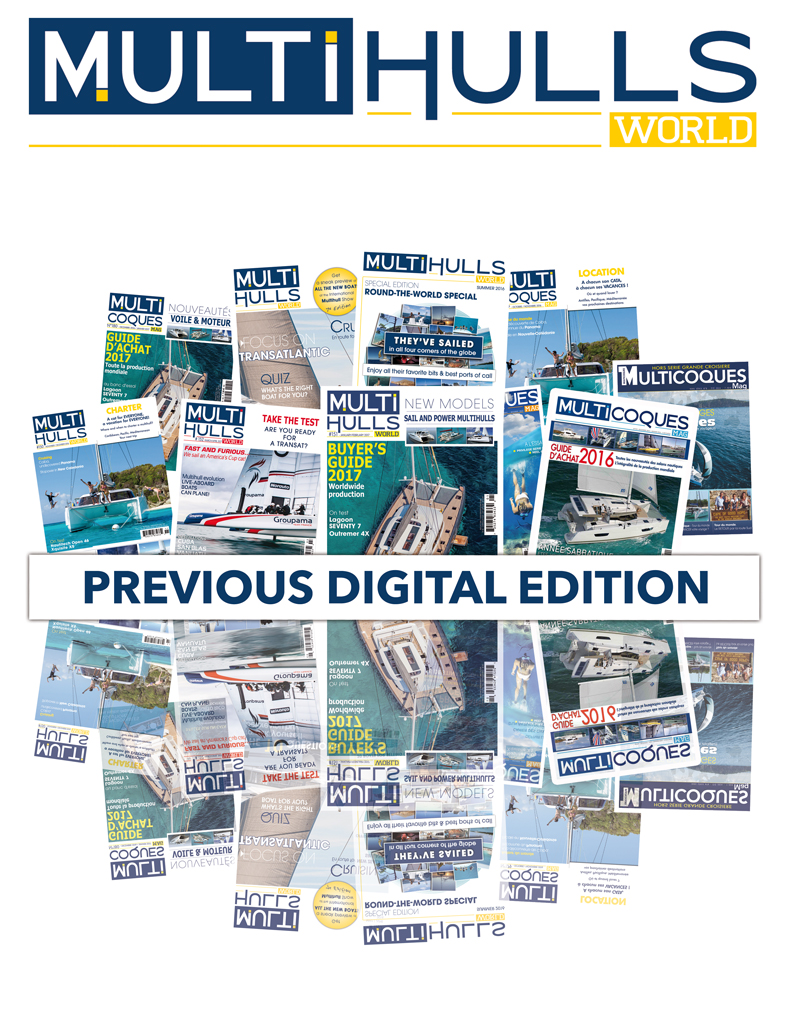
Issue #: Previous issues
Published: January / February 2013
- Access to Multihulls World digital archives Digital archives
The classic
Other solutions, so, this atlantic crossing, are you going to do it, or not, most-read articles in the same category.
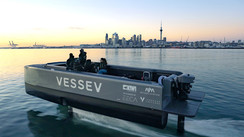
Archipelago 80

Sanctuary Cove International Boat Show

Lagoon Escapade
What readers think.
Post a comment
No comments to show.
MW #196 - July / Aug 2024

Astrea 42 Smart Electric

Subscribe now
The latest news from €3 / month
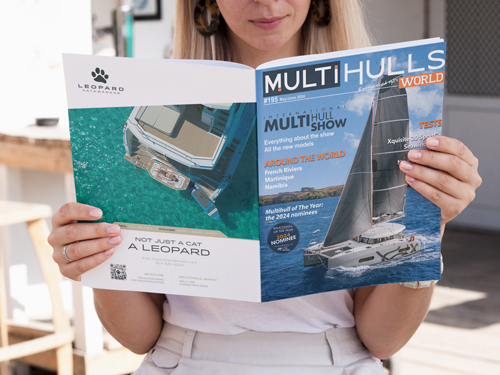
Video of the month
Our latest YouTube hit!

The Multihull of the Year
The 2024 results

Classified ads

2018 Fountaine Pajot MY 44

TRIMARAN FOILER EX TRINITRINE
Travel aluminium daggerboard catamaran

Corsair 880
Vous avez ajouté " " à vos favoris., vous avez supprimé " " de vos favoris., in order to add this article to your favorites, please sign in..
A British Airways flight to nowhere went across the Atlantic before turning back and flying 2,300 miles home after a technical issue
- A British Airways flight lasted nine hours but ended up back where it started after a technical issue.
- The Boeing 787 reached Newfoundland before turning back across the Atlantic to London Heathrow.
- The flight returned home as it is usually easier, and cheaper, to fix problems at a base airport.

Dozens of British Airways passengers endured a nine-hour "flight to nowhere" after crossing the Atlantic twice.
Monday's Flight 195 took off from London Heathrow for Houston about 30 minutes late, per data from Flightradar24 .
After five hours, the Boeing 787 Dreamliner reached the coast of Newfoundland — but only as it began to turn around.
Four hours later, the jet was back in London, having flown around a 4,600-mile round trip.
In a statement shared with Business Insider, a British Airways spokesperson said the flight returned "as a precaution due to a minor technical issue."
Related stories
"We've apologized to our customers for the disruption to their journey," they added.
British Airways has also rebooked them onto the next available flights, provided hotels, and details on how to claim for other expenses.
Going all the way back across the Atlantic may seem like a strange decision, but the problem was minor enough to allow it to reach Heathrow, where BA has a maintenance facility.
For both passengers and the airline, that's likely preferable to a diversion to northern Canada.
Last December, Delta Air Lines sent three jets to rescue passengers from a remote military base in Newfoundland and Labrador.
The flight had diverted there following a technical issue, but freezing conditions and limits on how long the flight crews could work left passengers stranded there for over 24 hours. The 270 passengers stayed overnight at the military barracks.
In a similar incident, an Air France flight from Paris to Seattle was forced to divert to Canada's far north last month. Another flight had to be canceled in order to rescue the passengers from Iqaluit, the capital of Canada's Nunavut territory, which has a population of less than 8,000.
Watch: A glitch in air traffic control left thousands of travelers stranded
- Main content
Selected Works of Mao Tse-tung
Speech at Moscow Celebration Meeting
November 6, 1957
Transcription by the Maoist Documentation Project. HTML revised 2004 by Marxists.org
- Yachting World
- Digital Edition
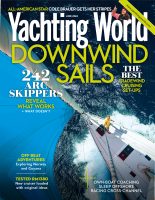
Starlink at sea: all change for cruisers
- May 13, 2023
Starlink has shaken up its offering for cruising sailors with a crack down on service term violations and new data plans

Starlink, Elon Musk’s low orbit satellite network which delivers low cost high speed internet via a portable dish, has shaken up its offering for cruising sailors and other broadband users at sea.
Starlink has been hailed as a game-changer by many adopters. Since its launch just two and a half years ago, its coverage has expanded rapidly and many cruisers crossing the Atlantic last season reported full service mid-ocean. Even cruisers in remote Pacific regions have been reporting excellent connectivity while at sea.
In March this year, four American sailors were rescued after their yacht Raindancer sank mid-Pacific in what may well be the first Starlink-enabled rescue. While the conventional rescue communication protocols worked effectively, their rescue was accelerated by the fact that several other yachts on the route were made aware of their plight from browsing Facebook while online, and a Whatsapp group was set up to help coordinate their rescue among boats with fast connectivity (see June issue of Yachting World for the full story).
However, most recreational sailors have been using Starlink Roam, previously known as Starlink RV (‘recreational vehicle’) – a plan designed for those in touring vehicles, off grid cabins etc, who needed connectivity whilst stationary – and, critically, on land. The original dedicated Maritime version was designed for commerical use, with subscription initially costing around £5,000 per month.

Starlink dish fitted to a bimini structure on a cruising yacht. Photo: Phil Johnson/SV Sonder
Numerous Facebook groups sprang up, populated with instructions on how to ‘hack’ the standard Starlink dish to improve its connectivity on a moving yacht, though Starlink contracts always made clear that using a modified stardard dish and Roam connection whilst sailing was in breach of its warranty and terms of service.
However, over the past couple of week cruisers have been receiving emails from Starlink notifying them that the company is cracking down on this usage:
“Your Starlink has been used in areas that violate the terms and conditions of your service plan: your plan does not include service on the ocean. Starting as early as May 9th, 2023 you will be unable to connect to the internet on the ocean except to access your Starlink account where you can make updates to your account.”
The message then went on to recommend users change their service plan to one of their new, more expensive, ‘Mobile Priority’ plans (though considerably less than the previous Maritime plan).
It’s important to note that this crack down is not a change to Starlink’s usage permissions, the company is only enforcing its existing terms and conditions.
The notifications prompted a flurry of discusssion on the many Starlink user groups, with some joking that it ‘felt like Y2K all over again’, and concerns that connectivity would be cut off instantly at 0000hrs on May 9 (that wasn’t the case, although some customers have received repeated emails and connectivity warnings).
Starlink at sea
Starlink maps service areas into 15 mile cells, shown on its service maps as blue and black hexagons, determining whether that area is ‘land’ or ‘ocean’, marked in ‘blue’ and ‘black’ respectively. If the satellite technology detects that the dish is being used in a black hexagon it will consider you to be on the ocean. There are, unsurprisingly, a few anomalies – islands and promontories etc which have not been recognised as land etc.

‘Land’ and ‘Ocean’ areas as shown around the Canary Islands on the Starlink map. Source: Starlink.com
Starlink advised Roam users instead move to one of their Mobile Priority plans. However, in a pattern that will be familiar to anyone who’s followed Musk’s rapid-fire changes at Twitter, those policy options went through a series of updates and different pricing plans over the past week.
One possible solution for cruising users may be to subscribe to a Priority data plan which can be ‘toggled’ on and off as they move between land and ocean areas – although some users report that even after toggling ‘off’ they were still using data from the more expensive Priority plan.
Whilst many RV/Roam users have successfully used Starlink’s standard dish whilst in motion, Starlink now offers a dedicated ‘in motion’ option using a higher performance dish. The website currently shows Starlink Martime and Starlink Mobility packages from £247 per month with a hardware cost of £2410, though there are some hefty discounts currently being promoted to existing standard dish owners on new hardware costs

Will a securely anchored yacht running Starlink be viewed as ‘in motion’? Photo: Phil Johnson/SV Sonder
What’s not yet clear is whether the geo-locating technology considers being on anchor or in a marina as stationary or in motion. One email shared on a user group, apparently from Starlink customer service, says:
“You do not need the high performance dish to use in-motion service. However, using the regular dish in-motion voids the warranty, as it wasn’t deigned or built for in motion use. In motion means moving…. A boat at anchor is considered in motion. The bobbing motion will trigger the motion sensors in the dish.
“The non high perforamnce antennas may be used in motion now, and in the forseeable future. We do not anticipate removing this capability. A reminder however that they weill be out of warranty if used in motion.”
However, confusing, Starlink’s own FAQ page , under “Can I use Starlink in motion?”, advises:
“Flat High Performance Starlink is only available to be purchased in certain regions. If your account country is outside these regions, you can use your current Starlink hardware paired with the Mobile Priority data to access prioritized service globally on land and in the ocean while stationary.” [our underline]
User groups advise contacting Starlink direct if, for example, you want to use non-priority data while in port and only occasional in-motion priority data for an ocean passage. Options and restrictions also depend on which region cruisers purchased their dish in, and which address their data plan is registered to.
The other consensus among user groups seems to be that, unless you need seamless high speed connectivity because you are running a business whilst cruising or similar, not to rush to replace hardware or sign up for new data plans as they are rapidly evolving.
Putin's visit to North Korea is a very much a diplomatic two-fingers to the West
The stronger ties between Russia and North Korea are a major concern for the West and its Asian allies - with fears Moscow could start supplying Pyongyang with some of its nuclear know-how.

Moscow correspondent @IvorBennett
Tuesday 18 June 2024 09:14, UK

This will only be Vladimir Putin's second visit to North Korea.
The first was soon after he assumed office in 2000, nearly a quarter of a century ago.
That's a long time to wait for a return trip. Was it the hospitality? Or did he just have better options elsewhere?
Either way, it's very much a case of beggars can't be choosers right now, with Tuesday's visit highlighting both Russia's isolation from the West and the blossoming friendship between these two pariah states.
What does North Korea offer Russia? A lot more than camaraderie. According to the US and others, it's supplying the Kremlin with weapons and ammunition to use in Ukraine.
In an interview with Bloomberg recently, South Korea's defence minister said the North had sent nearly five million artillery shells to Russia since September, as well as dozens of ballistic missiles.
Moscow and Pyongyang both deny the accusation but UN monitors claim to have seen evidence. In January, they concluded the remnants of a missile fired from Russia on Kherson was that of a North Korea-made Kwasong-11 series.
More on North Korea

South Korea fires more warning shots at North Korean soldiers crossing DMZ as landmines explode

Warning shots fired after North Korean soldiers cross border

South Korea to restart 'unbearable' loudspeaker broadcasts in response to North Korea's sewage balloons
Related Topics:
- North Korea
Kyiv claims there are several more examples.
For North Korea, the closer ties are a big win. As well as food and fuel, analysts say Russia has provided the poverty-stricken nation with much-needed economic aid and diplomatic support.
In March, for example, Russia vetoed the UN resolution to renew the mandate of the panel of experts monitoring sanctions enforcement.
It's also assumed Moscow is supplying some technical know-how for Pyongyang's space and satellite programmes, after President Putin hosted Kim Jong Un at the Vostochny Cosmodrome in Russia's far east last September.
The stronger ties between the two is a major concern for the West and its Asian allies.
Read more world news: 17 dead after two shipwrecks off Italian coast Body of American man found on Greek island Germany seizes 35.5 tonnes of cocaine

These are two leaders who like to warn how their fingers are poised over the red button. The primary fear in Washington and Seoul is that Russia could start supplying some of its nuclear know-how and missile technology, on top of the other assistance.
The Russian leader's entourage for the visit certainly raises eyebrows. It includes his new defence minister Andrei Belousov as well as Denis Manturov, the deputy prime minister responsible for defence.
The official line from the Kremlin is that there's nothing to see here - yes, we might sign a security agreement, but it won't be directed against any other country.
Russia's "right" to develop good relationships with its neighbours "should not be of concern to anyone", Kremlin spokesperson Dmitry Peskov said.

Keep up with all the latest news from the UK and around the world by following Sky News
Behind the scenes, though, they will no doubt delight in the disquiet the visit is causing.
It's very much a diplomatic two-fingers to the West, which may bring tangible geopolitical benefits too.
If South Korea is considering providing weapons to Ukraine, for example, this might make them think twice about it.
Related Topics

Divers find Finnish WWII plane shot down by Moscow

Despite more than sixty years of blockade, Cuba yet to come to heel

Fire crews battle Los Angeles area's first major fire of the year

Crews rescue 28 people trapped on Oregon amusement park ride
Crossing moscow's red line permissible austria.

Chancellor Karl Nehammer has dismissed a warning from his own defense minister on striking Russia
Austrian Chancellor Karl Nehammer does not perceive the decision by NATO nations to allow Kiev to use their weapons against Russia outside of what they consider Ukrainian territory as a cause for concern.
Speaking with the NZZ media group, Neuhammer said he disagreed with Defense Minister Klaudia Tanner, who said earlier this month that the US and its allies had crossed a "red line" by granting Ukraine such permission.
The interview with Nehammer was published on Monday, after his liberal-conservative Austrian People's Party (OVP) lost convincingly to the nationalist Freedom Party of Austria (FPO) in this month's European Parliament election.
The chancellor said the debate on use of Western arms had gone "in the wrong political direction" in a shameful way. His stance is that "under international law, such attacks on Russia are permissible." Moscow could withdraw troops and see Western military aid to Kiev "automatically reduced," he said.
The previous restriction on Ukraine's use of US weapons was imposed by President Joe Biden to " prevent World War III." According to the media, Washington relaxed it and allowed limited strikes on Russia's Belgorod Region due to Russian advances in neighboring Kharkov Region. Multiple NATO nations have made similar policy changes regarding arms that they donate to Ukraine.
The Austrian foreign minister said that while she perceived that as escalatory , "as a militarily neutral state, it is not our place to judge." Tanner added that she was happy to hear assurances by NATO Secretary General Jens Stoltenberg that members of the US-led bloc will not be required to send troops to Ukraine.
Moscow has described the Ukraine conflict as part of a proxy war on Russia, in which Ukrainians serve as "cannon fodder." Western nations are de facto participating parties due to the level of their involvement and the influence they have on Ukrainian actions, according to Russian officials.
President Vladimir Putin has stated that Russia could send weapon systems similar to those provided to Ukraine to enemies of the US and its allies to be used against Western military assets. This path of escalation leads to an outcome that neither side will like, he warned.
He accused his opponents of spreading "Russian narratives" about Ukraine and declared that unlike centrists, "radicals have no answers and are offering pseudo-solutions," referring to populist forces surging across the EU.
RT.com 18th June 2024, 20:13 GMT+10
Read This Next
Big News Network
- Big News Network News Agency
- Midwest Radio Network
- Mainstream Media
BIG NEWS NETWORK.COM
- Contact & Support
- Terms & Conditions
PRODUCTS & SERVICES
- News Releases
Copyright © 1998-2024 Big News Network All rights reserved. ISSN : 2616-6917

COMMENTS
Before the time of ocean liners and airplanes, crossing the Atlantic used to be a great adventure that took a long time to complete. Nowadays, it's very ... Sailing west and using the tradewinds is perfect on a catamaran, the sail will be faster and more comfortable than a monohull of the same size. Looking at the 2019 ARC (Atlantic Rally for ...
Atlantic Crossing: Sailboat or Catamaran. The vastness of the Atlantic Ocean tests crews' sailing skills and endurance, whether they choose to ply the waves aboard a traditional sailboat or a modern catamaran. Both vessels have advantages, offering completely different sailing experiences. Sailing boat: strong emotions and contact with the sea.
The duration of crossing the Atlantic by catamarans varies according to weather conditions, vessel speed, and route. The journey may take approximately 2-4 weeks with an average speed of 9-10 knots. However, little or no wind support during several days may cause an extension for a few days in travel.
An Atlantic-crossing suitable catamaran measures around 40 to 50 feet (12 to 15 meters) long, which is size is ideal for long-distance travel with a small crew. Choosing the right size for an ocean-crossing cat is important. A large-enough sailboat provides adequate room in the living spaces and can accommodate cooking spaces, separate dining ...
As for the speed, catamaran's can max out at around 15 to 20 knots, with some of the fastest hitting speeds of 60 knots. However, the average speed for most sailors is about 5-9 knots. Knots are the nautical equivalent of miles per hour. Moving at the speed of 1 knot means that you are moving 1 nautical mile per hour (1.85 kilometers per hour).
A catamaran on the ARC rally reefed for an approaching squall, as seen from Jeanneau 64 Layla. ... But it is a very different pace than on land, and with an Atlantic crossing comes the ...
Last year, when we carried out our annual survey of ARC skippers, we found that yachts of between 46ft and 55ft had a battery capacity, on average, of 700ah, rising to 1,000ah for yachts over 56ft ...
Catamaran sailing; Bluewater sailing techniques; Skip Novak's storm sailing techniques; Sail faster sail safer; Special reports; ... Weather is a large part of any Atlantic crossing: deciding ...
A crossing of the Atlantic and then the Pacific aboard a catamaran. Gordon and Louise. ... Many Fountaine Pajot Owners choose to come to La Rochelle, where Fountaine Pajot catamarans are built, to collect their new boat and start their maiden voyage from France. Gordon and Louise, Owners of the Elba 45 hull 1, set sail from Port Cogolin in the ...
Join our Patreon : patreon.com/BarefootDoctorsSailing - from $3/episodeJoin Barefoot Doctors Sailing as we move into Day 2 of the storm with fluctuant winds ...
Aug 2, 2017. Original: Jul 8, 2014. When cruising sailors talk about crossing the Atlantic Ocean, there are a few things they're all sure to mention: they ate, they slept, they sailed. But in many ways, the similarities end there, and the individual stories unfold with their own cast of characters, each pledging the ancient fraternity of the ...
Seeing this as a great chance to sail a purpose-built 50-foot offshore cruising catamaran to learn how it performed on an ocean passage in the many conditions we were sure to encounter on a 2,800-nautical-mile Atlantic crossing, we accepted the offer. Paul investigated a noise at the masthead; while the view was outstanding, he found the motion ...
FOOD PREPARATION. Our chef will prepare three meals a day for seven people for +/- 16 days, which is the average time it takes us to sail across the Atlantic. Below are some handy hints from how our chef does this: - Fruit and vegetables are cut up, portioned and frozen for future use. - Some dishes are made in advance and frozen - these ...
In November of 2022, I joined the crew of the Lagoon 42 catamaran Games Maker II during the westbound Atlantic crossing from Gran Canaria to St Lucia. The boat was part of the 2022 Atlantic Rally for Cruisers (ARC). The crew included the British boat owners couple Tony and Lel and their old friend Joz from Australia.
Contact or Visit Call now to speak with an expert: 844.567.3087. The sun doesn't always shine. The seas aren't always calm. Your guide to what makes the well-suited for long distance sailing catamaran.
We sailed through the Atlantic Ocean from Hampton, VA in the Chesapeake to the British Virgin Islands in the Caribbean on our Leopard 45 Sailing Catamaran. W...
A catamaran, especially a 50 footer, is a fast boat. If the idea is to avoid heavy stuff, but to keep moving, I would suggest the shortest circle route, maybe in July to avoid bergy bits out of the Davis Strait/Labrador. "America" here could be the entire East Coast, but a lot of people would go to St. John's, Newfoundland and, knowing they ...
Increase the means of generating electricity with a diesel generator, larger alternator, solar panels and/or a towed turbine and look at means of making savings, such as fitting LED lights. 2. 4 ...
Kyle MacLachlan and Sofia Helin star in a WWII drama based on the friendship of Franklin Roosevelt and Norwegian Crown Princess Martha. See full episodes online.
Sailing across the North Atlantic in mid-winter was hardly a pleasant trip. But WSC, a good sailor, was indifferent as the 45,000-ton ship pounded gale-force winds before finally reaching Hampton Roads, Virginia. In August and November 1943, Churchill traveled aboard the aging battle cruiser HMS Renown.
The summer is coming in hot: As Thursday's solstice approaches, a heat wave is hitting the East Coast and the Midwest and is expected to last through at least Friday. Almost 66 million people ...
Crossing the Atlantic is not an obligation: more and more sabbatical year cruisers prefer to concentrate on the 'islands in the sun' part, with beaches bordered by coconut trees and small passages between two dream anchorages. Or, on the contrary, they envisage a complete tour of the West Indies, from the arc of the islands to the Central ...
Dozens of British Airways passengers endured a nine-hour "flight to nowhere" after crossing the Atlantic twice. Monday's Flight 195 took off from London Heathrow for Houston about 30 minutes late ...
Лето в Москве; L'été a Moscou. The summer in Moscow. 2008
Speech at Moscow Celebration Meeting. November 6, 1957. [Speech at a joint meeting of the two Soviets of the Supreme Soviet of the USSR (namely the Soviet of the Union and the Soviet of Nationalities) in celebration of the 40th anniversary of the Great October Revolution. Extracted from the magazine People's China.
Starlink has been hailed as a game-changer by many adopters. Since its launch just two and a half years ago, its coverage has expanded rapidly and many cruisers crossing the Atlantic last season ...
Putin's visit to North Korea is a very much a diplomatic two-fingers to the West. The stronger ties between Russia and North Korea are a major concern for the West and its Asian allies - with ...
Crossing Moscow's red line permissible Austria Chancellor Karl Nehammer has dismissed a warning from his own defense minister on striking Russia Austrian Chancellor Karl Nehammer does not perceive the decision by NATO nations to allow Kiev to use their weapons against Russia outside of what they consider Ukrainian territory as a cause for concern.